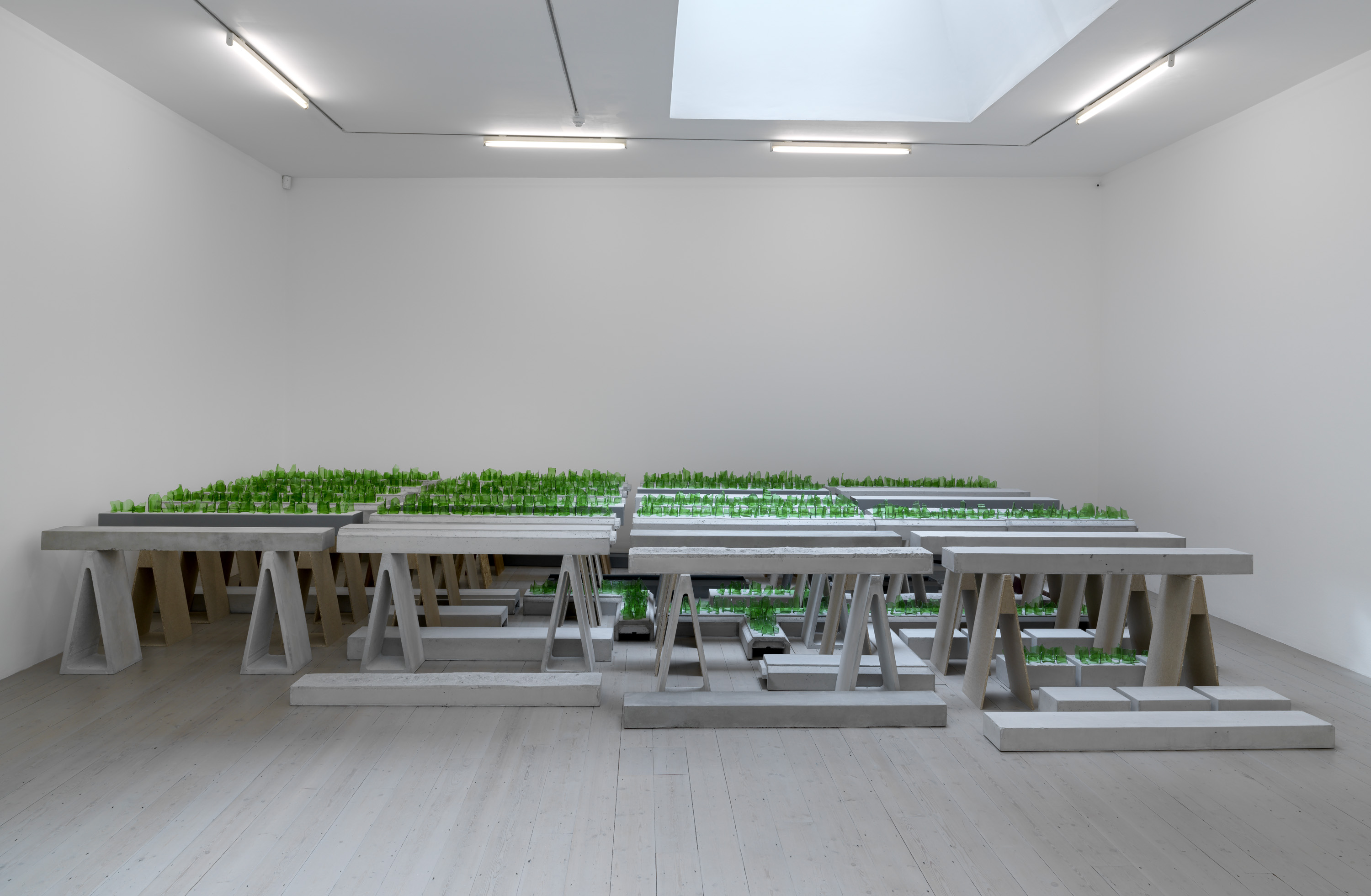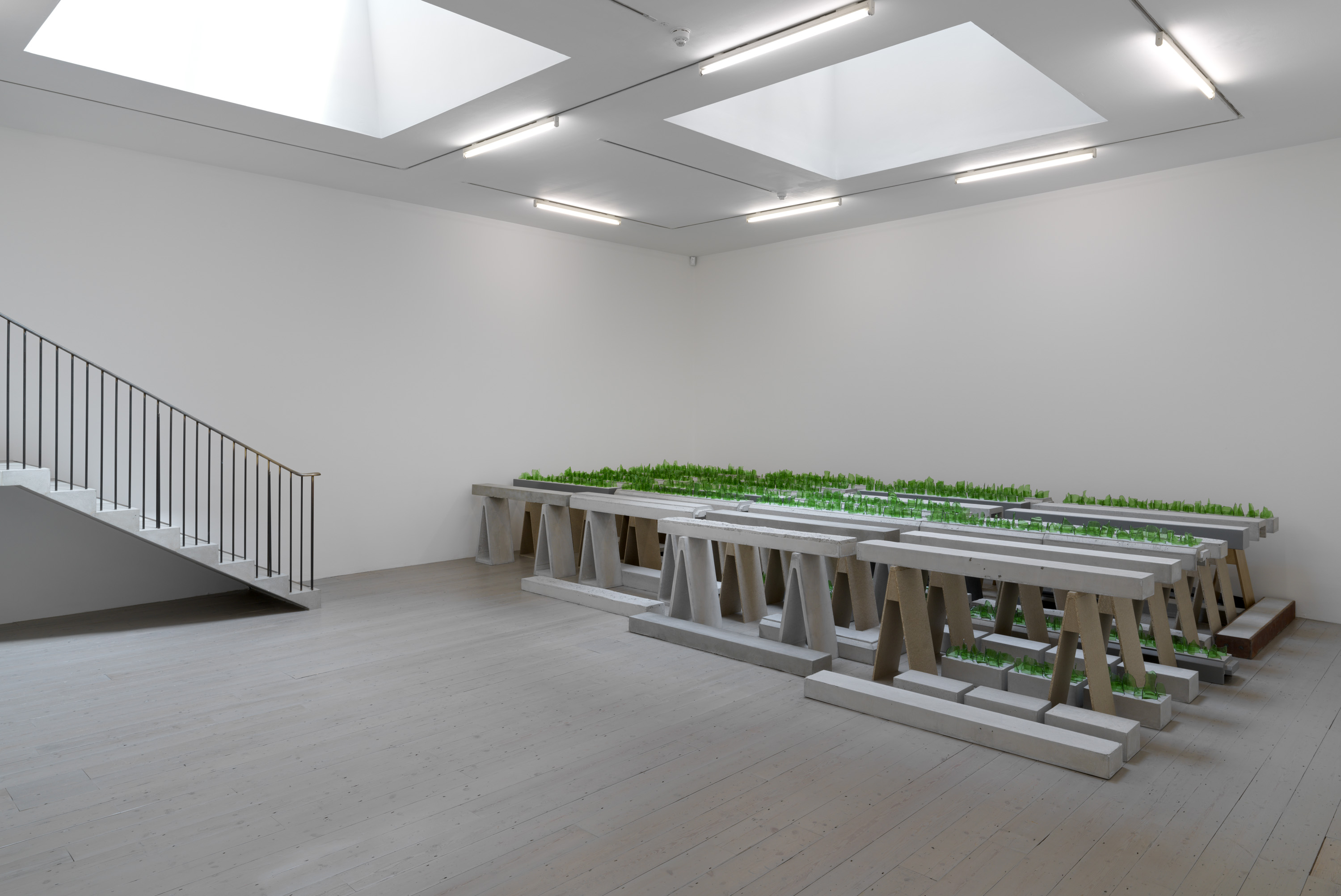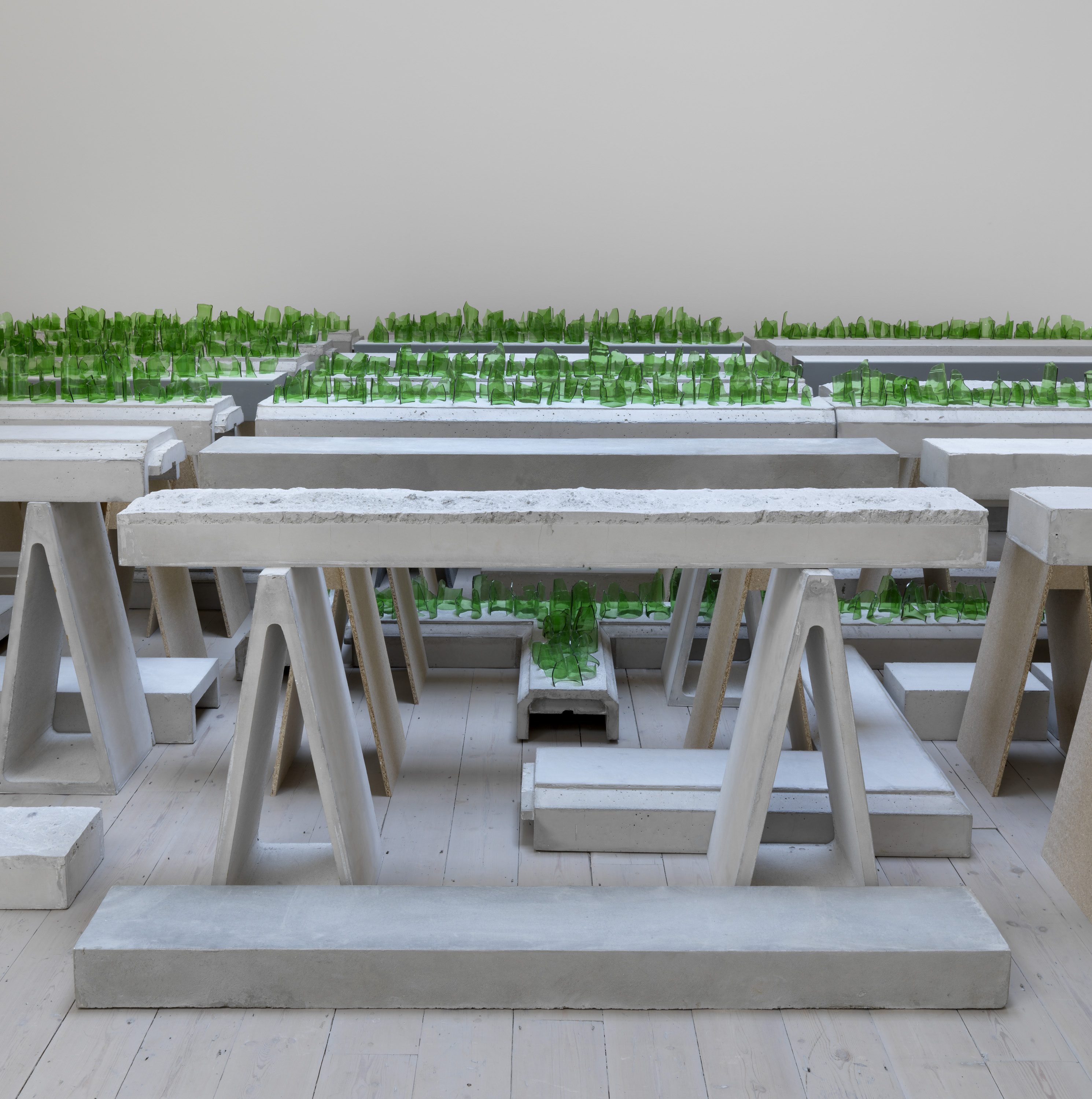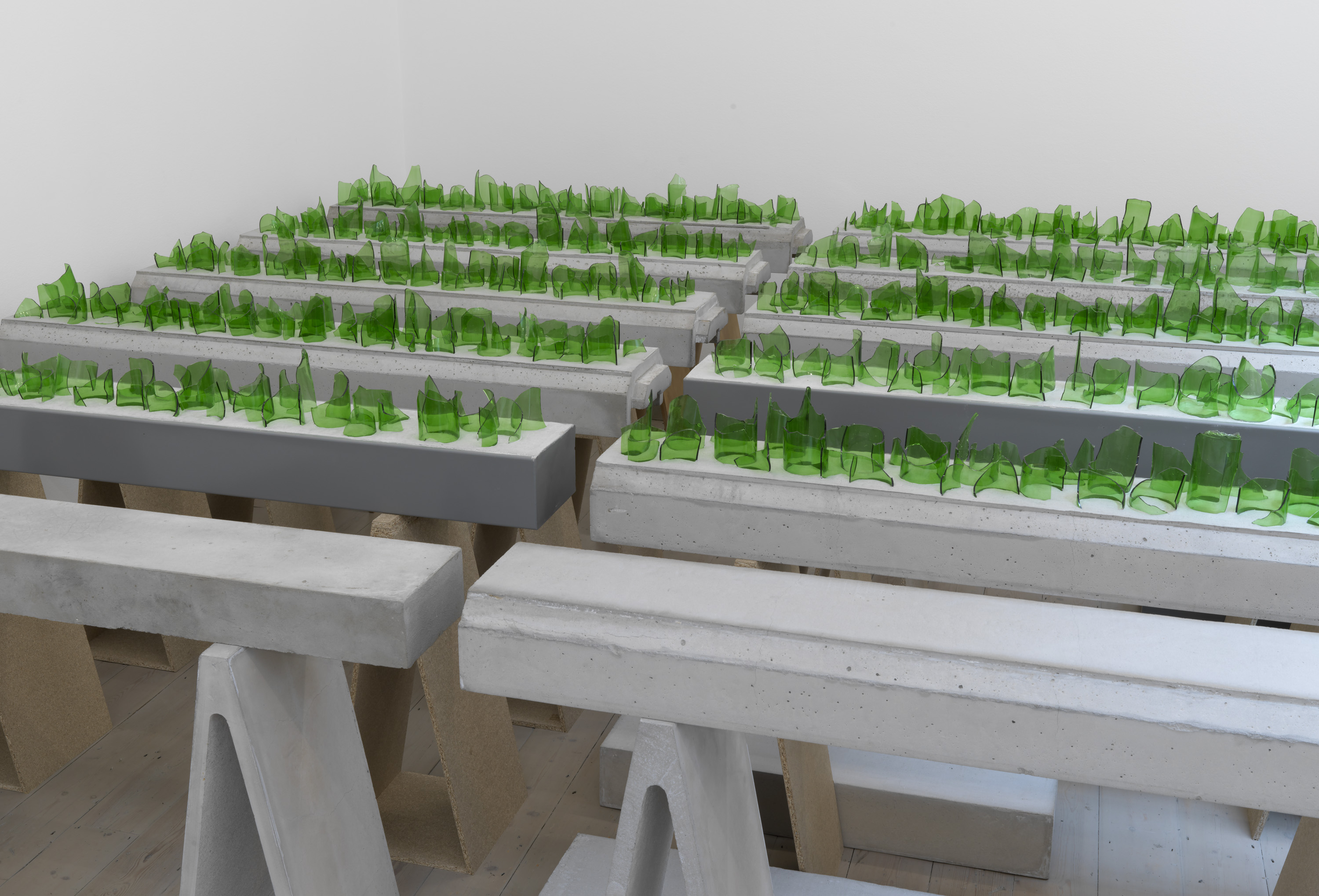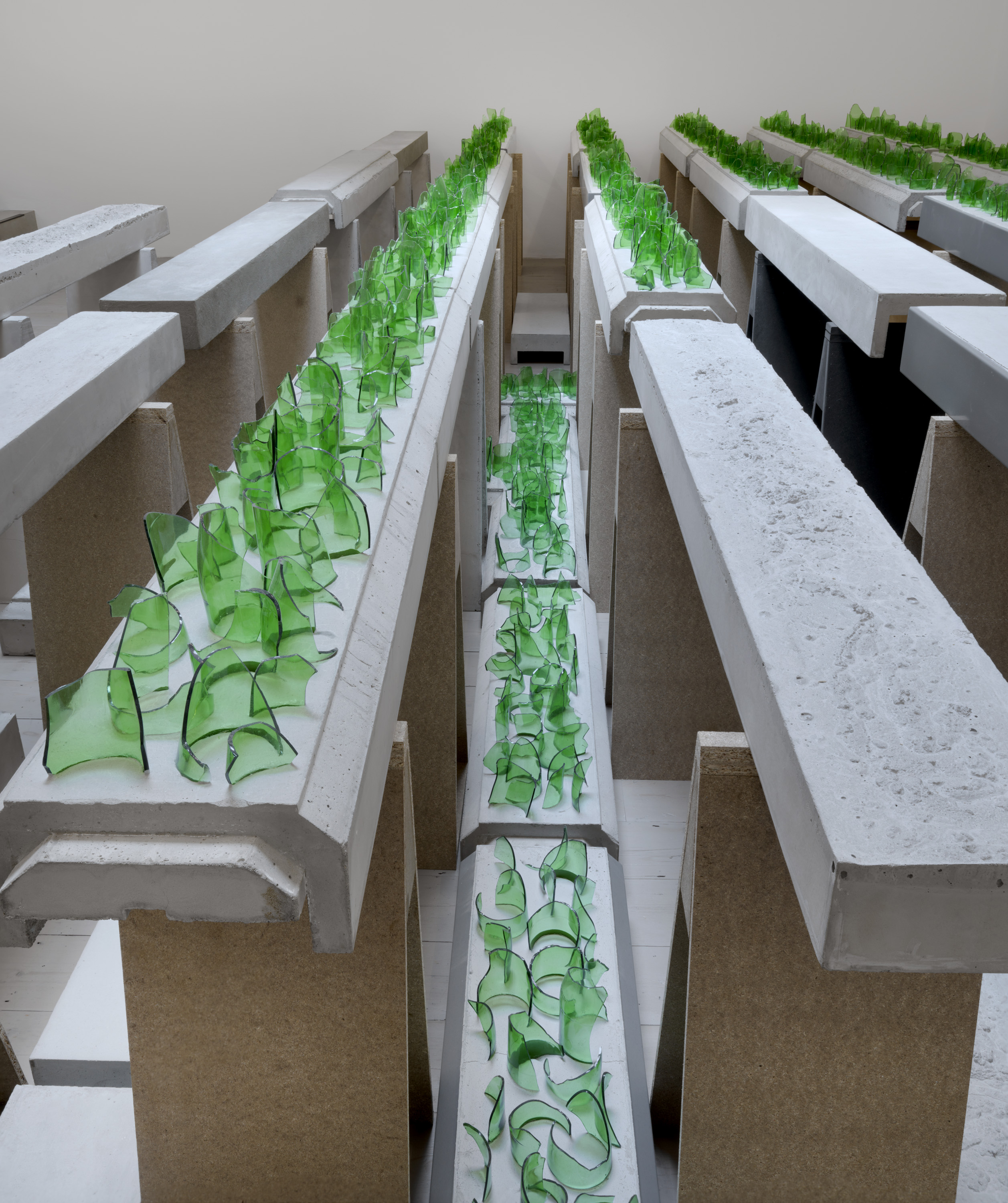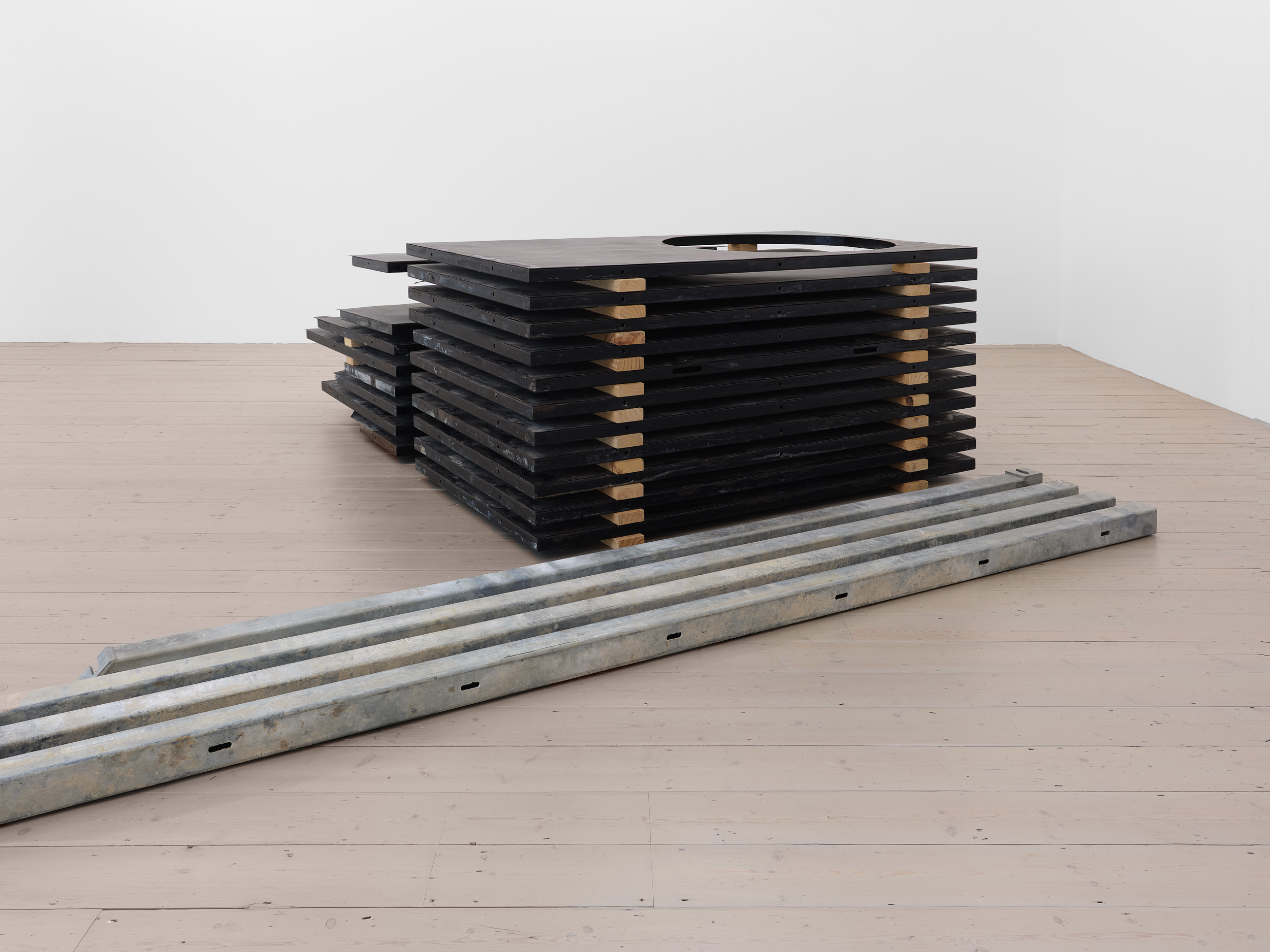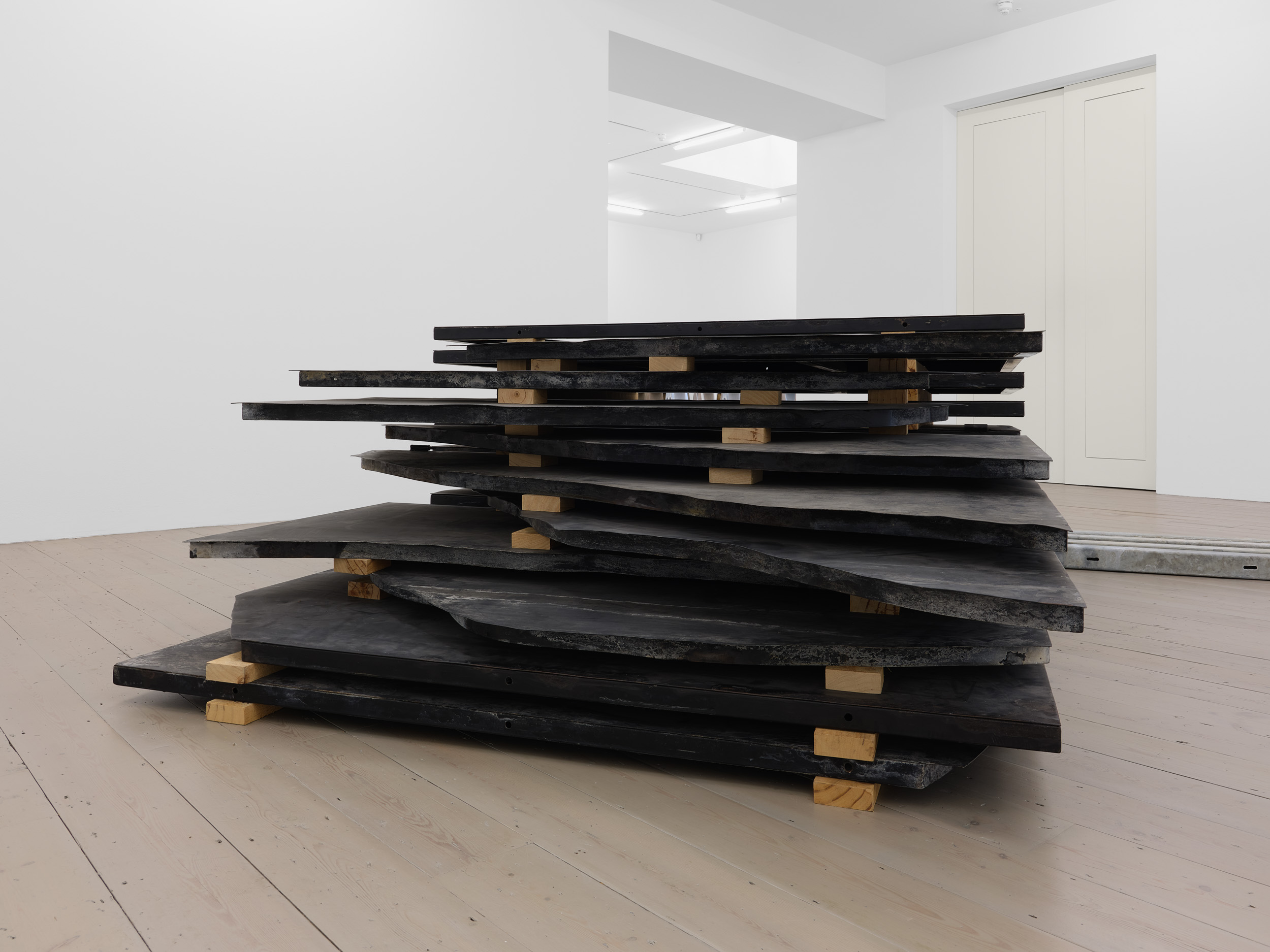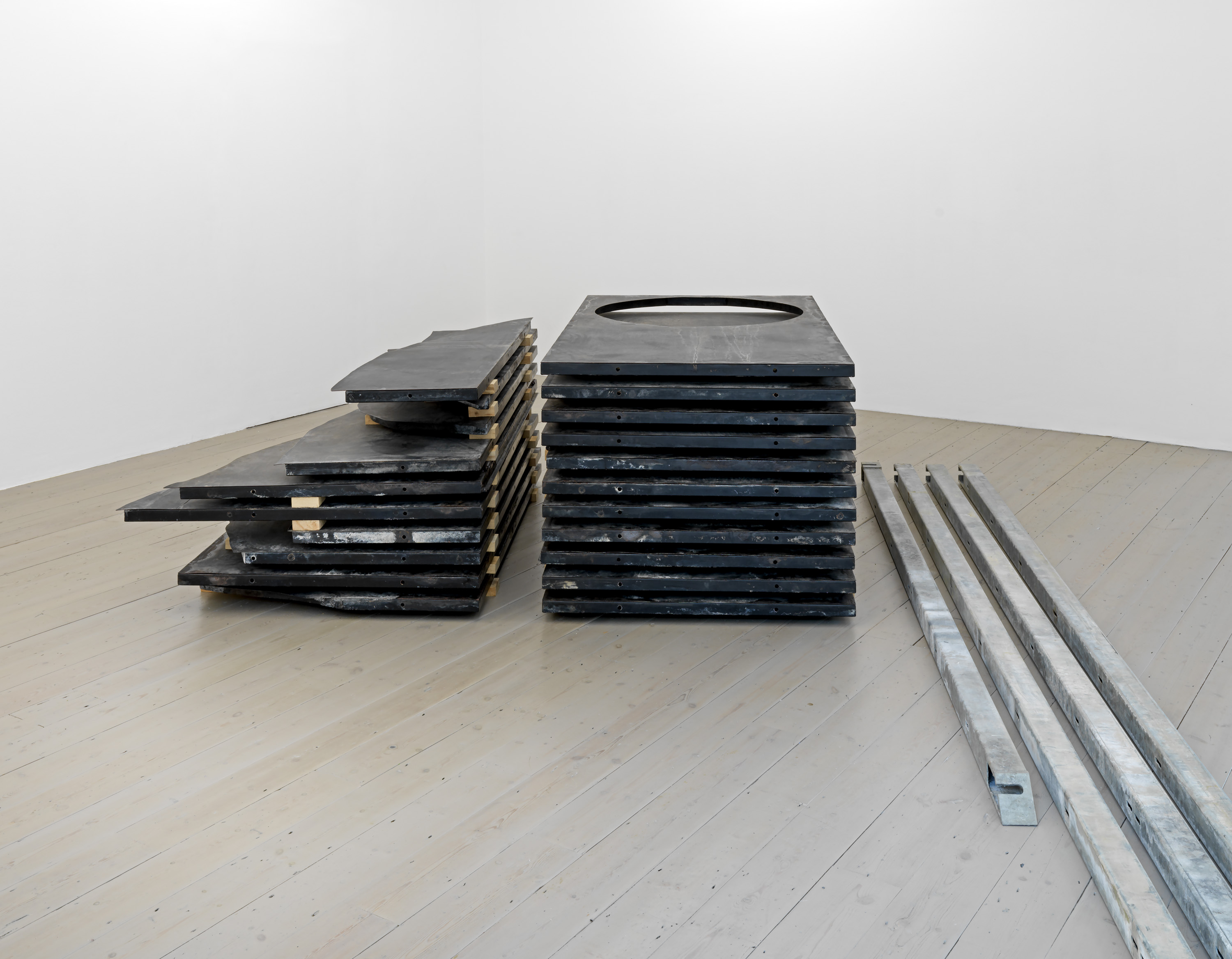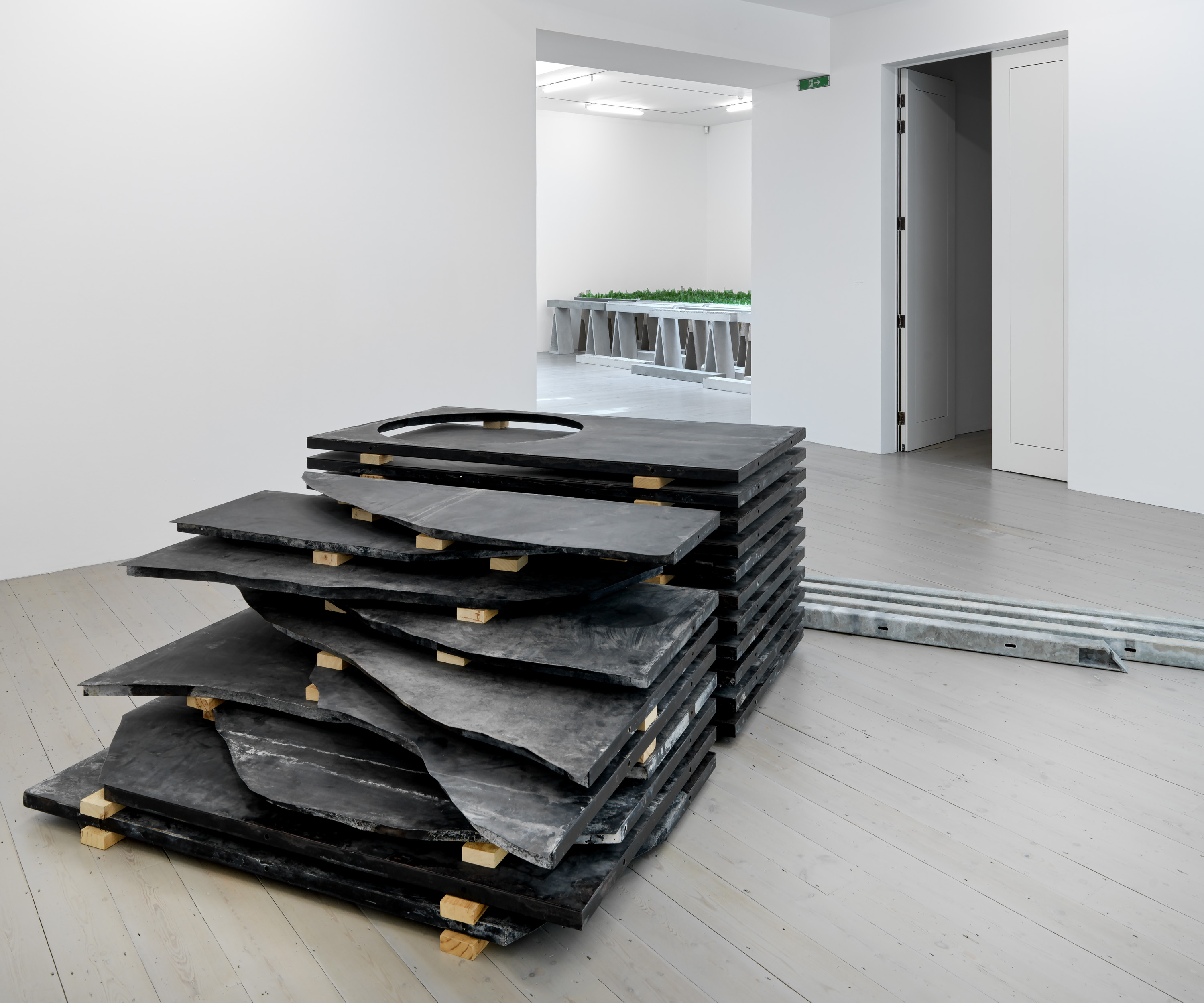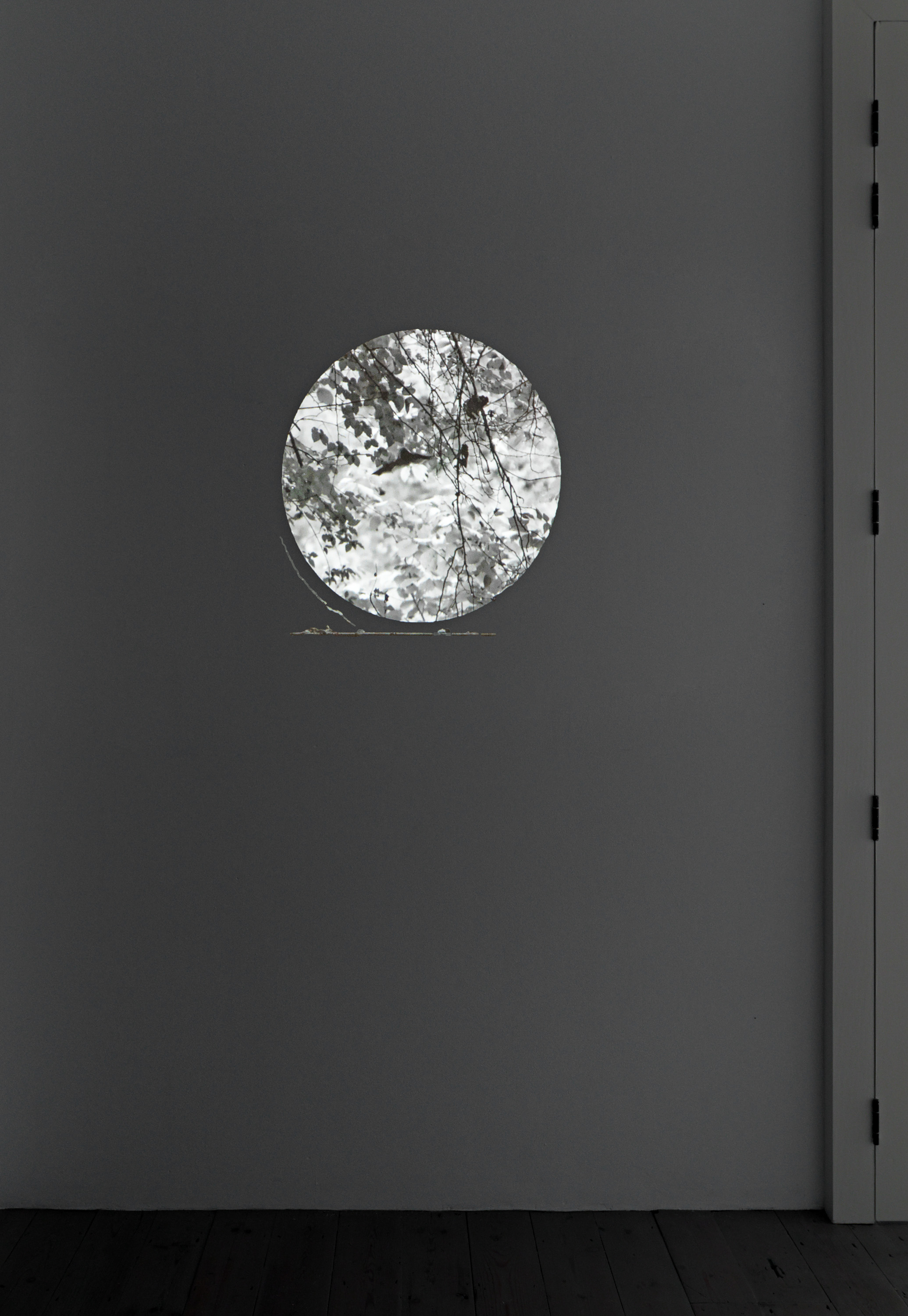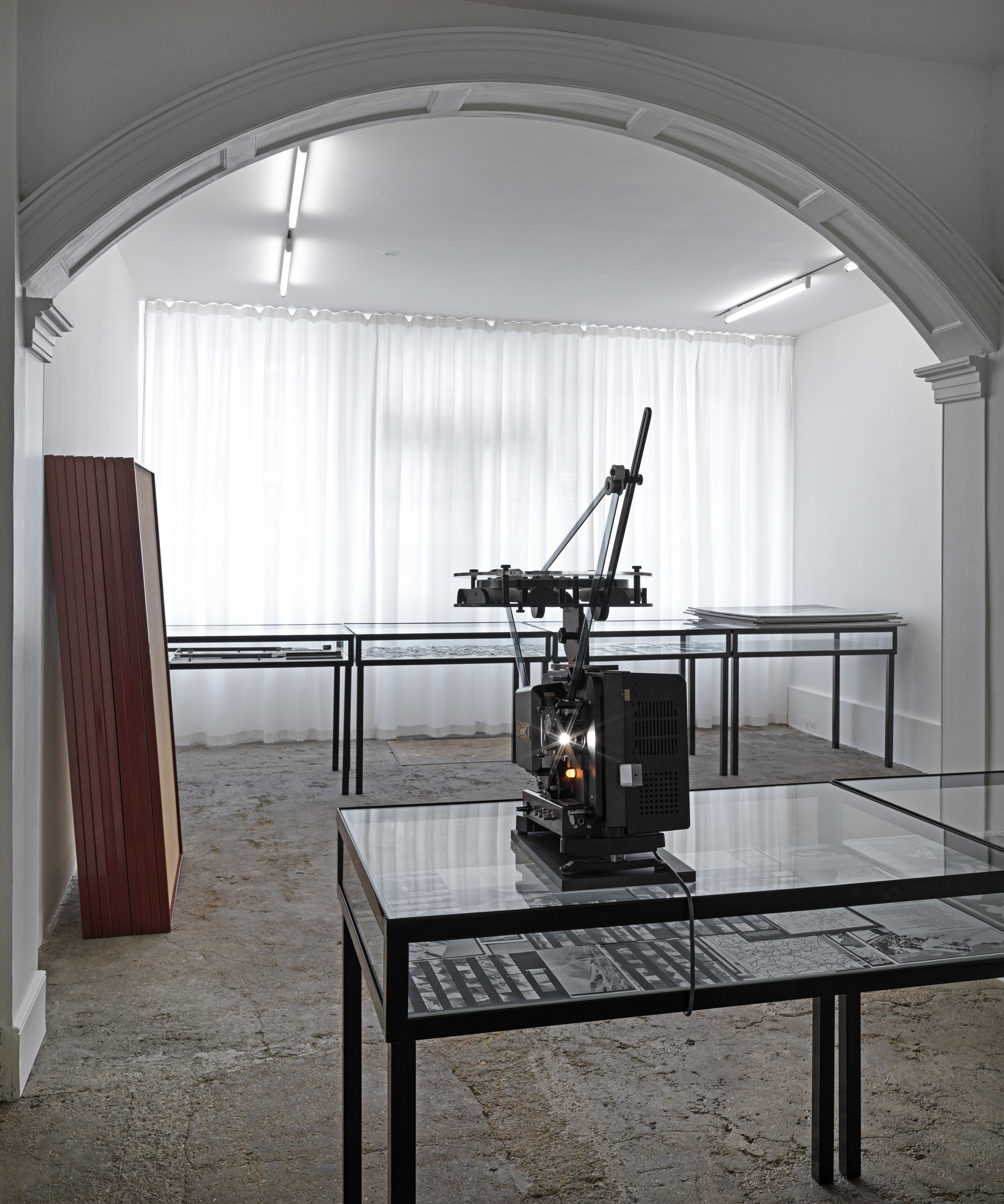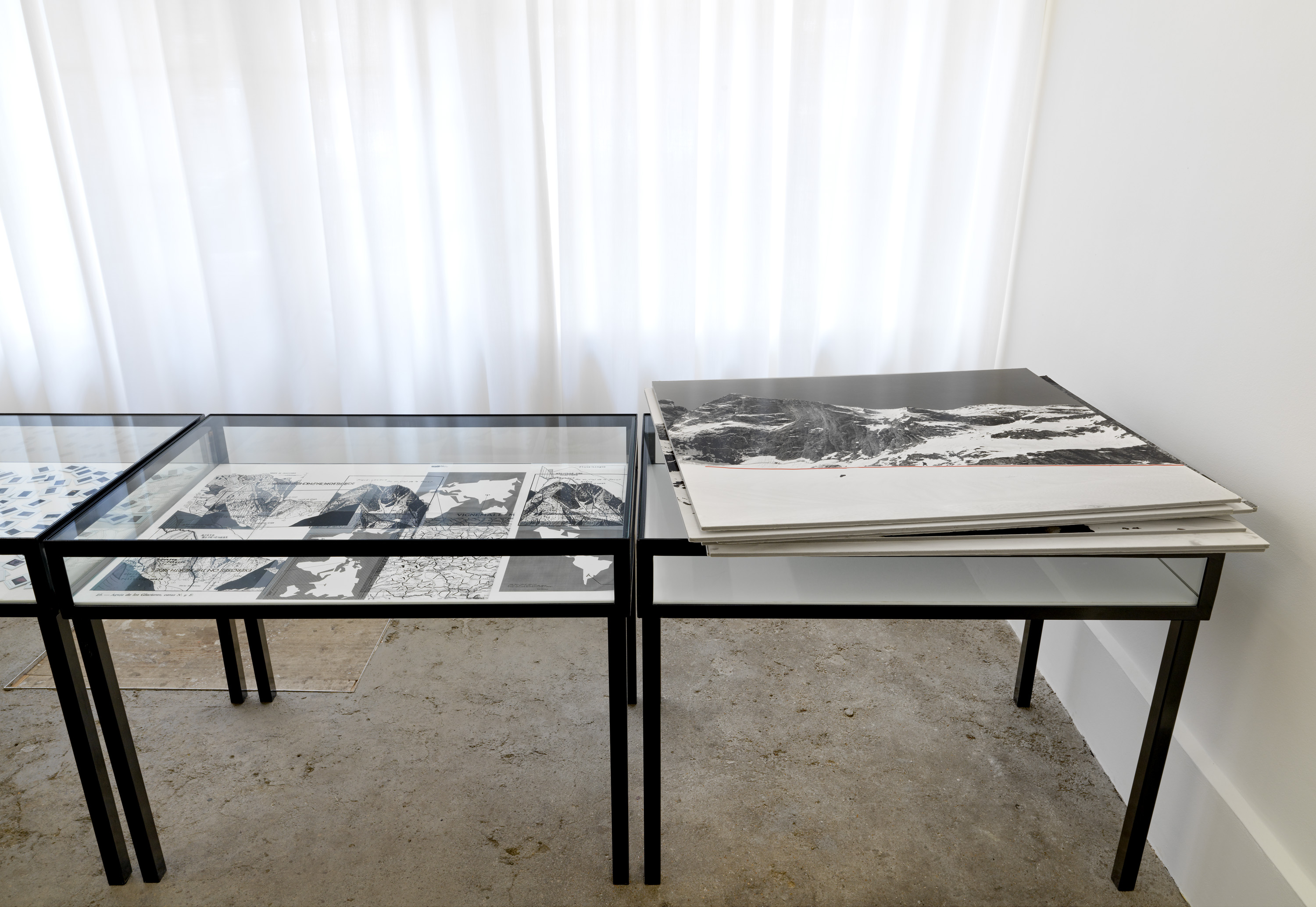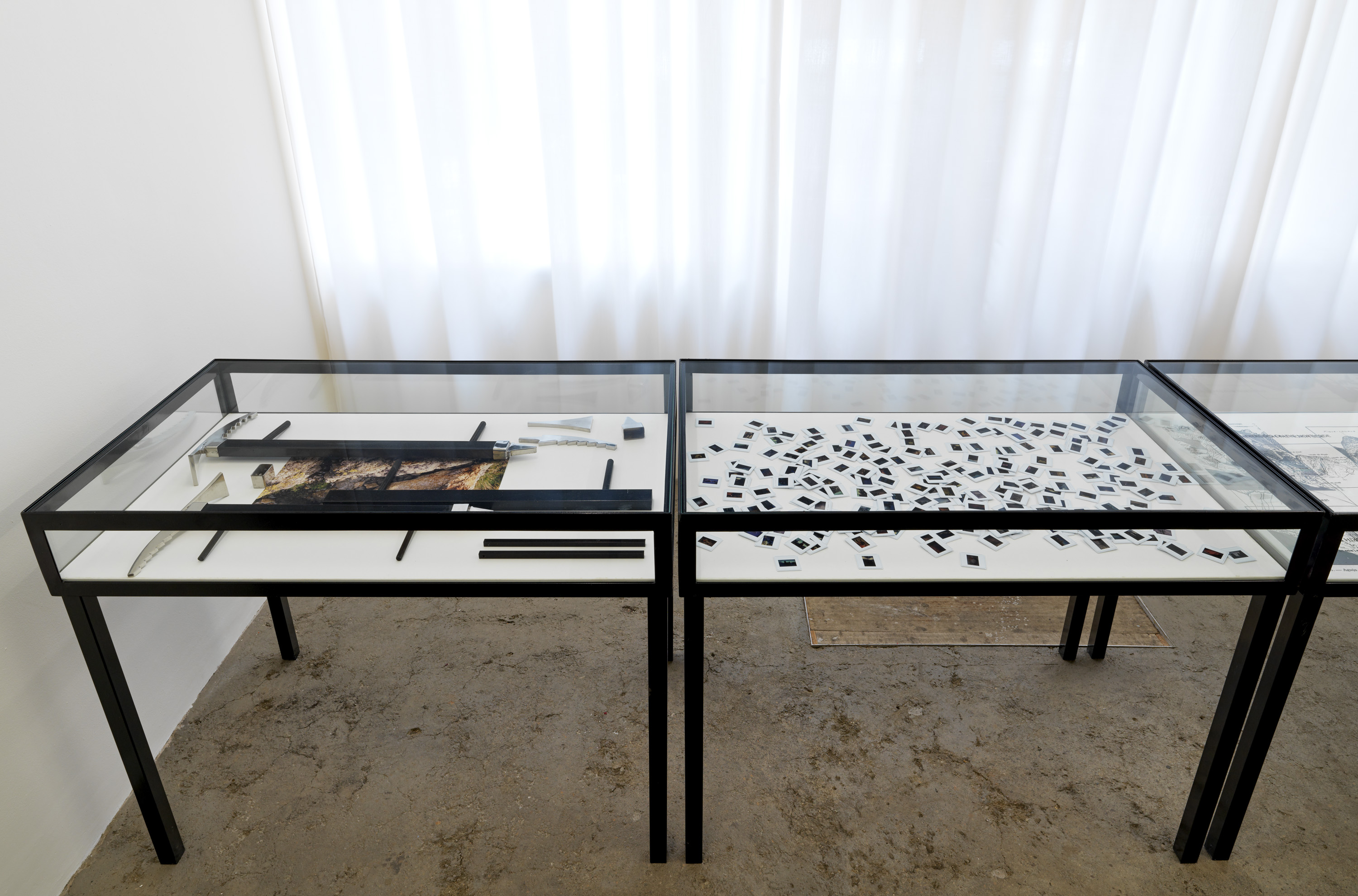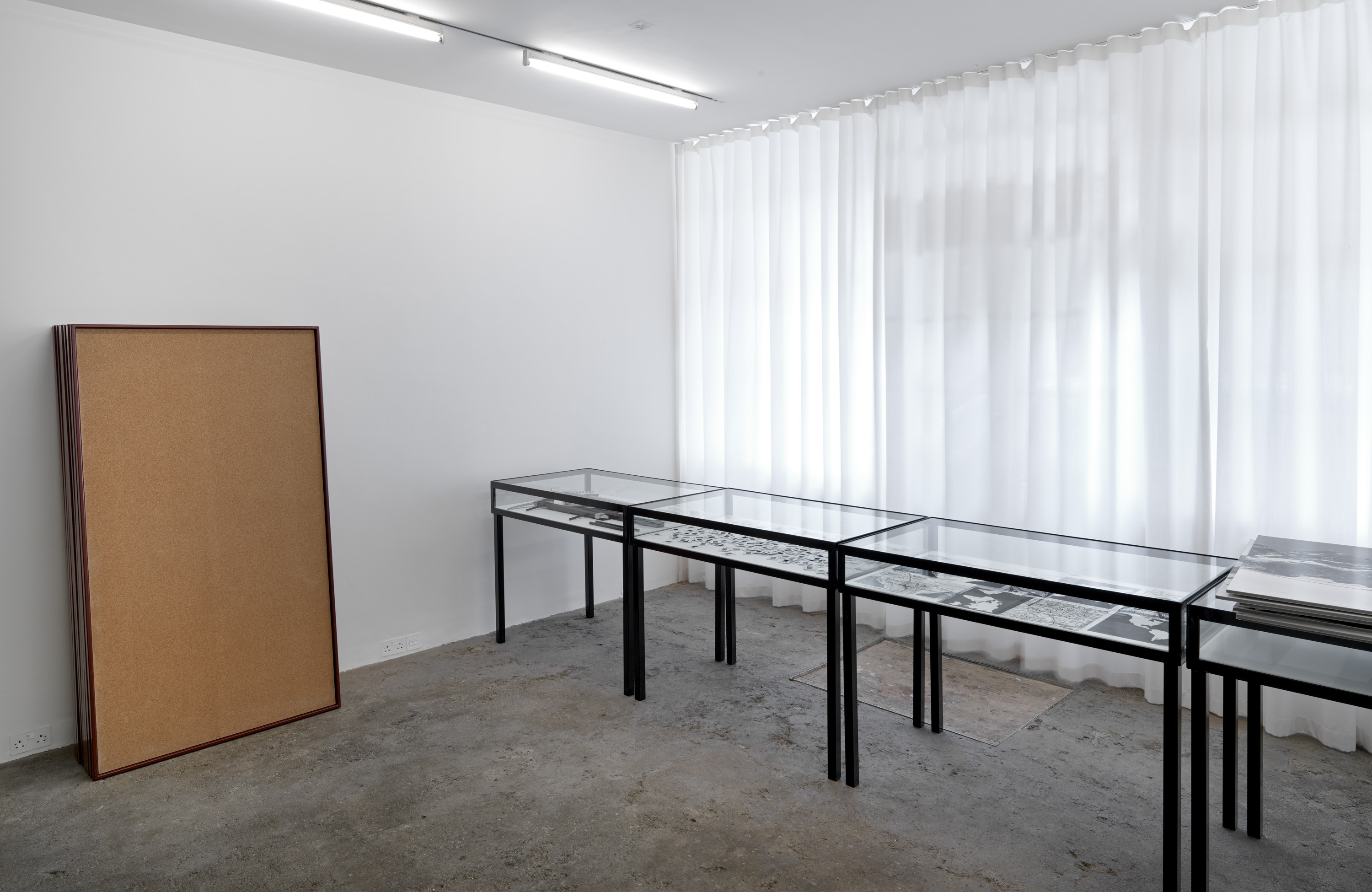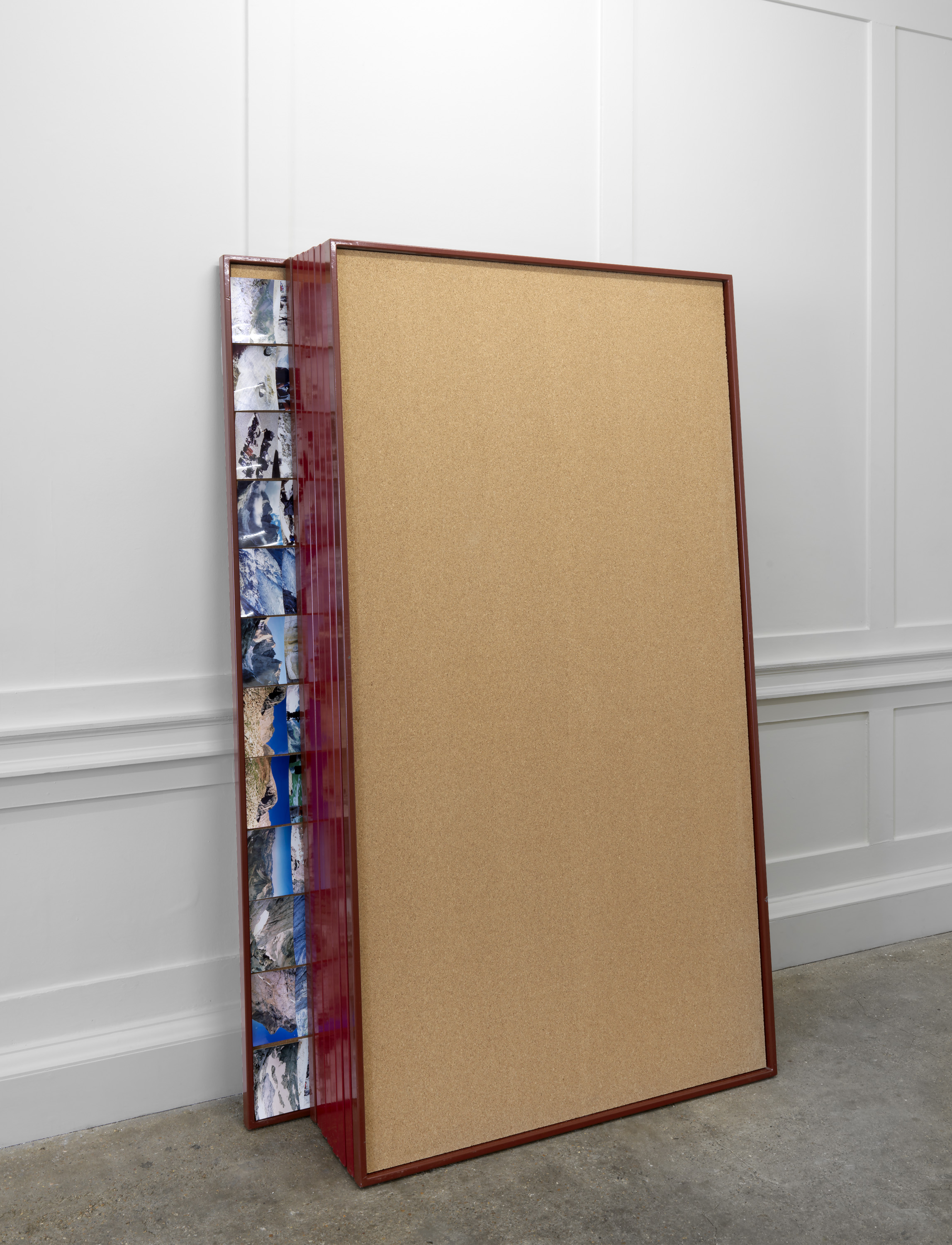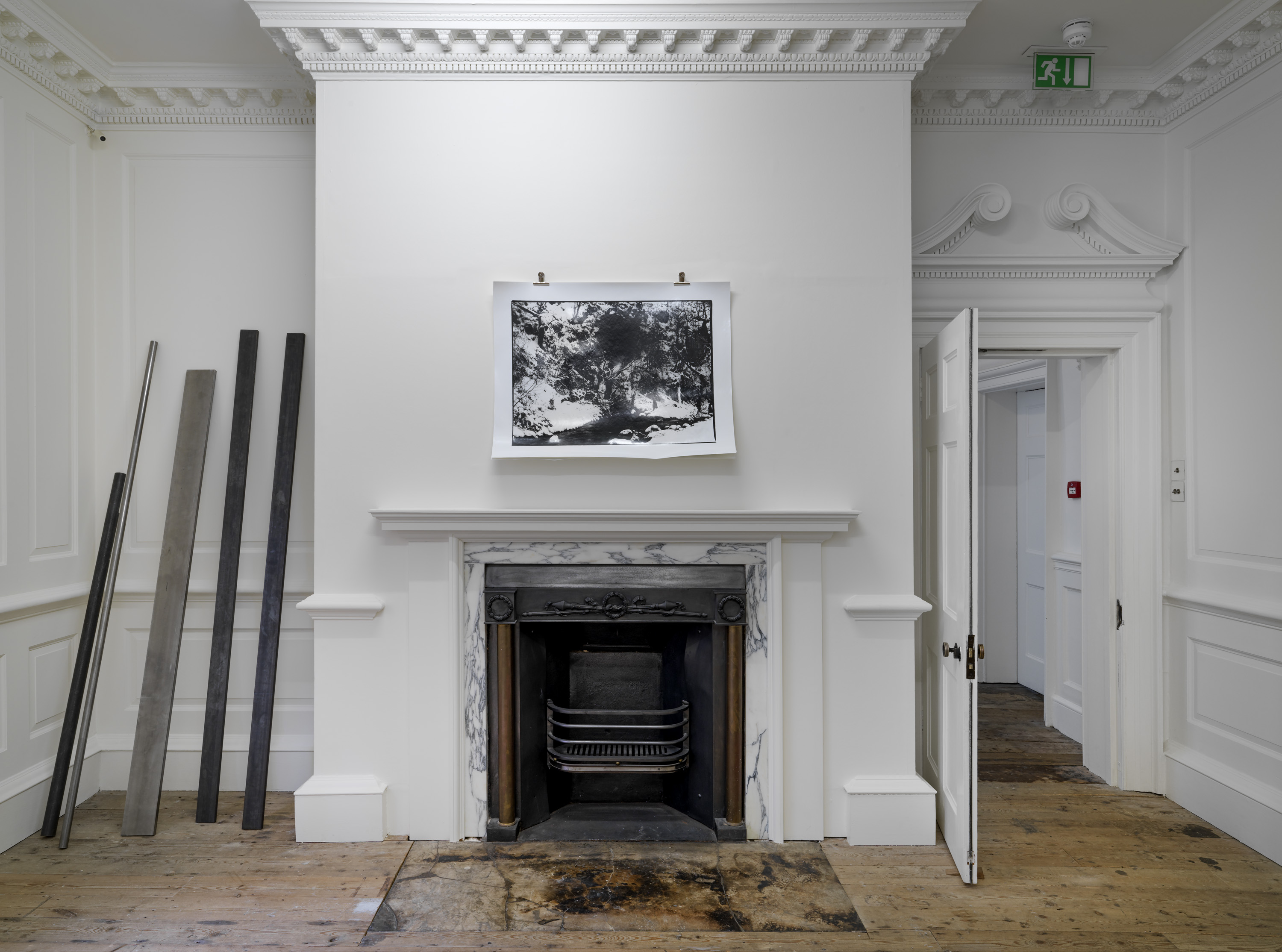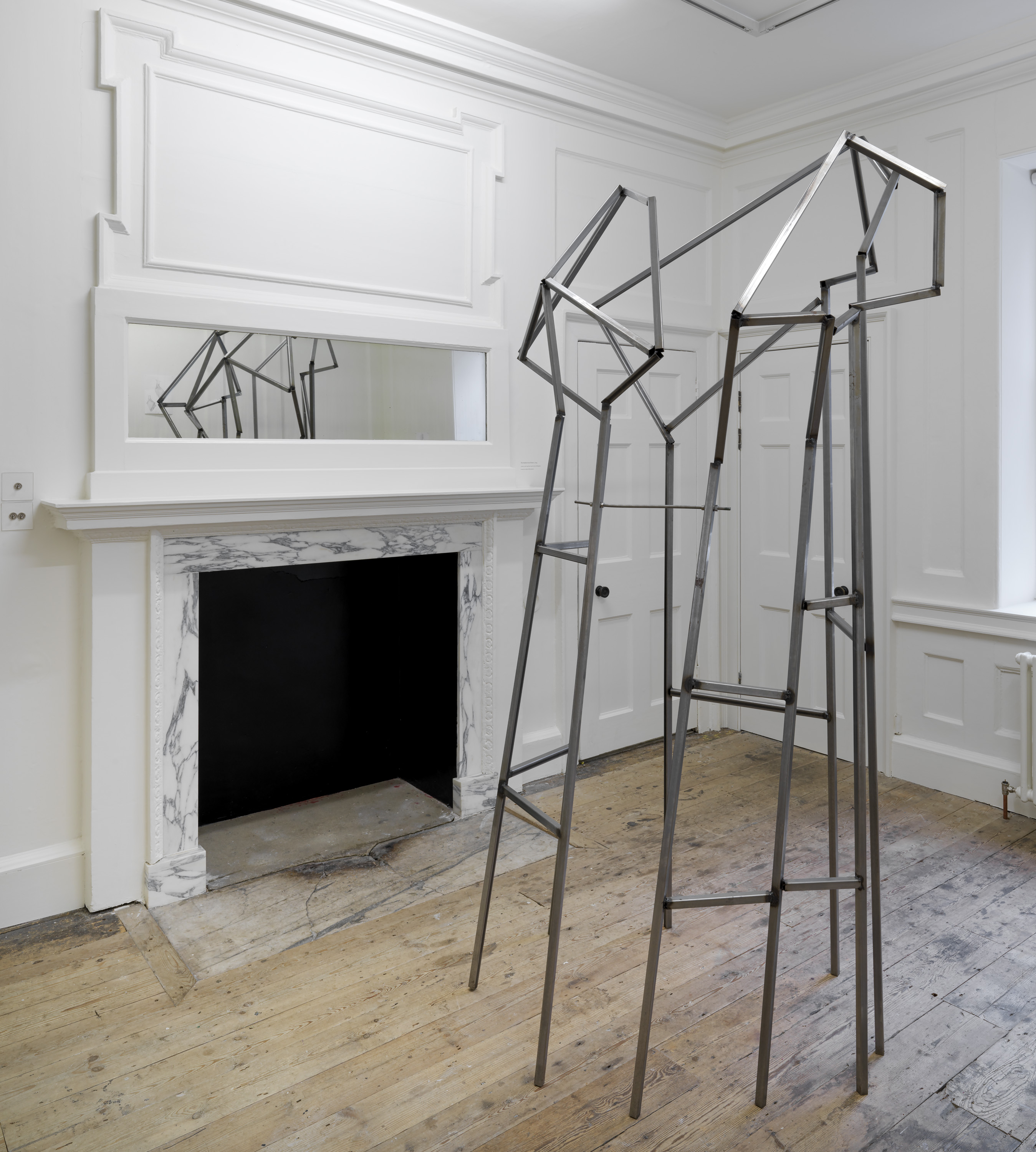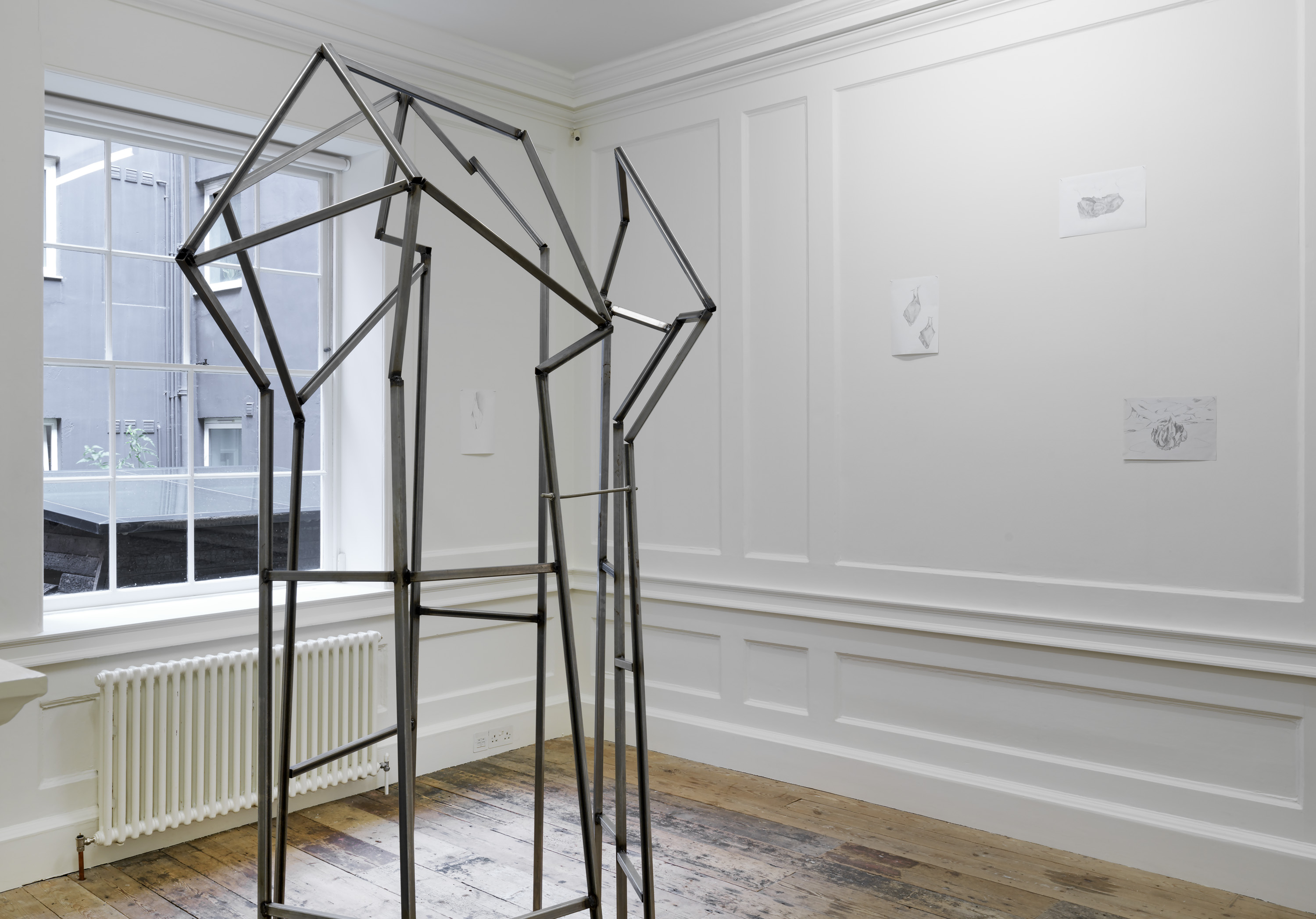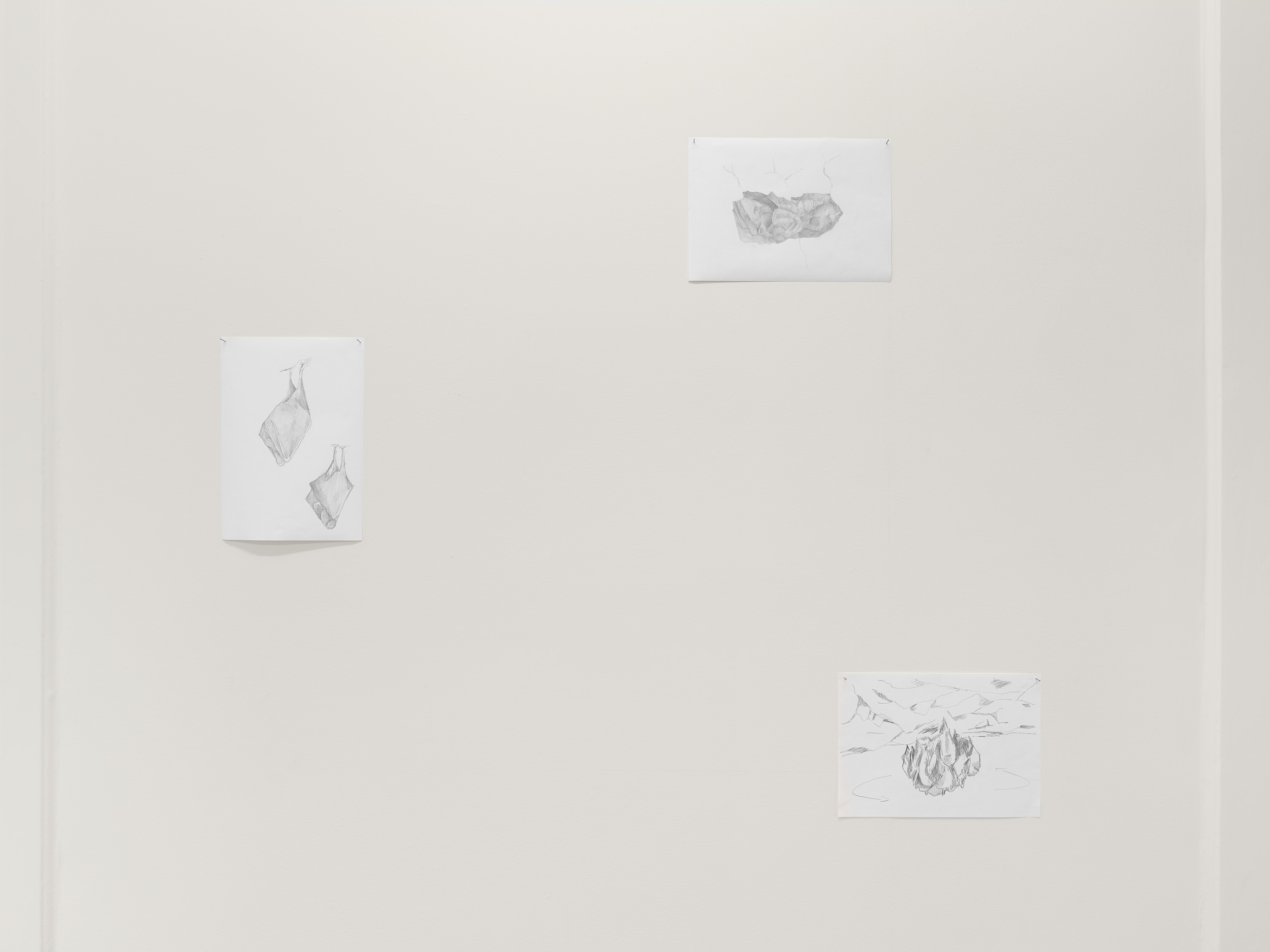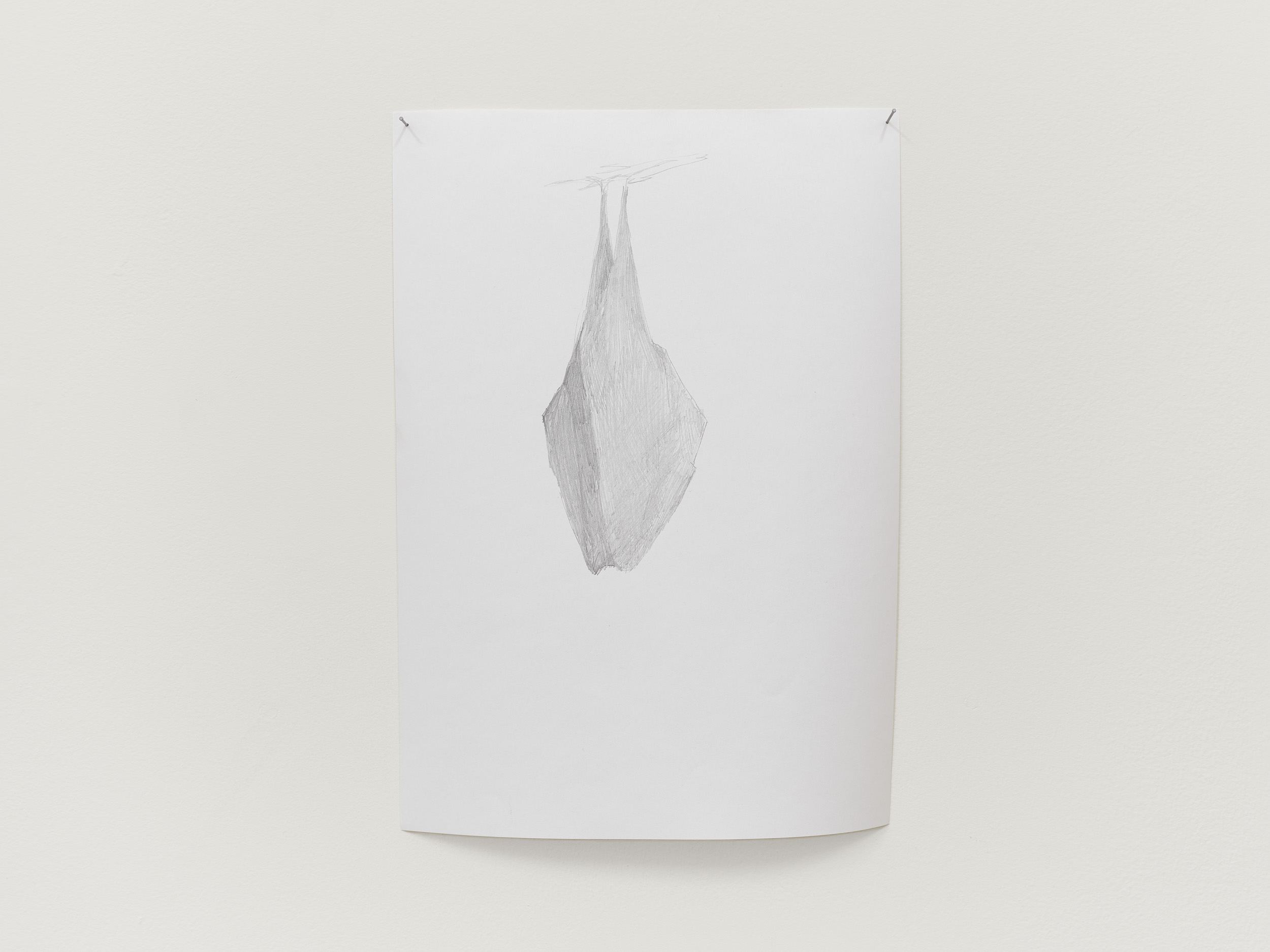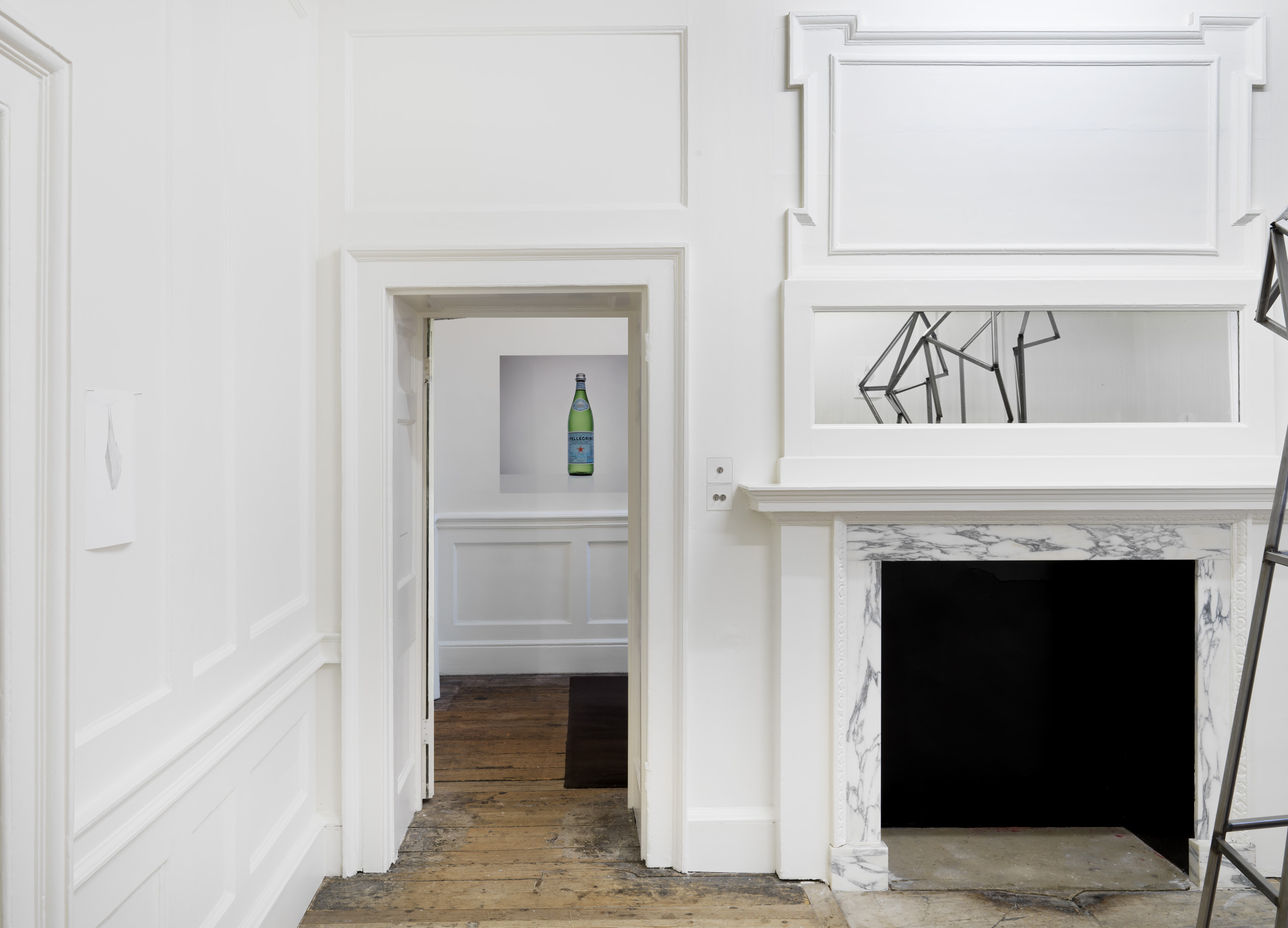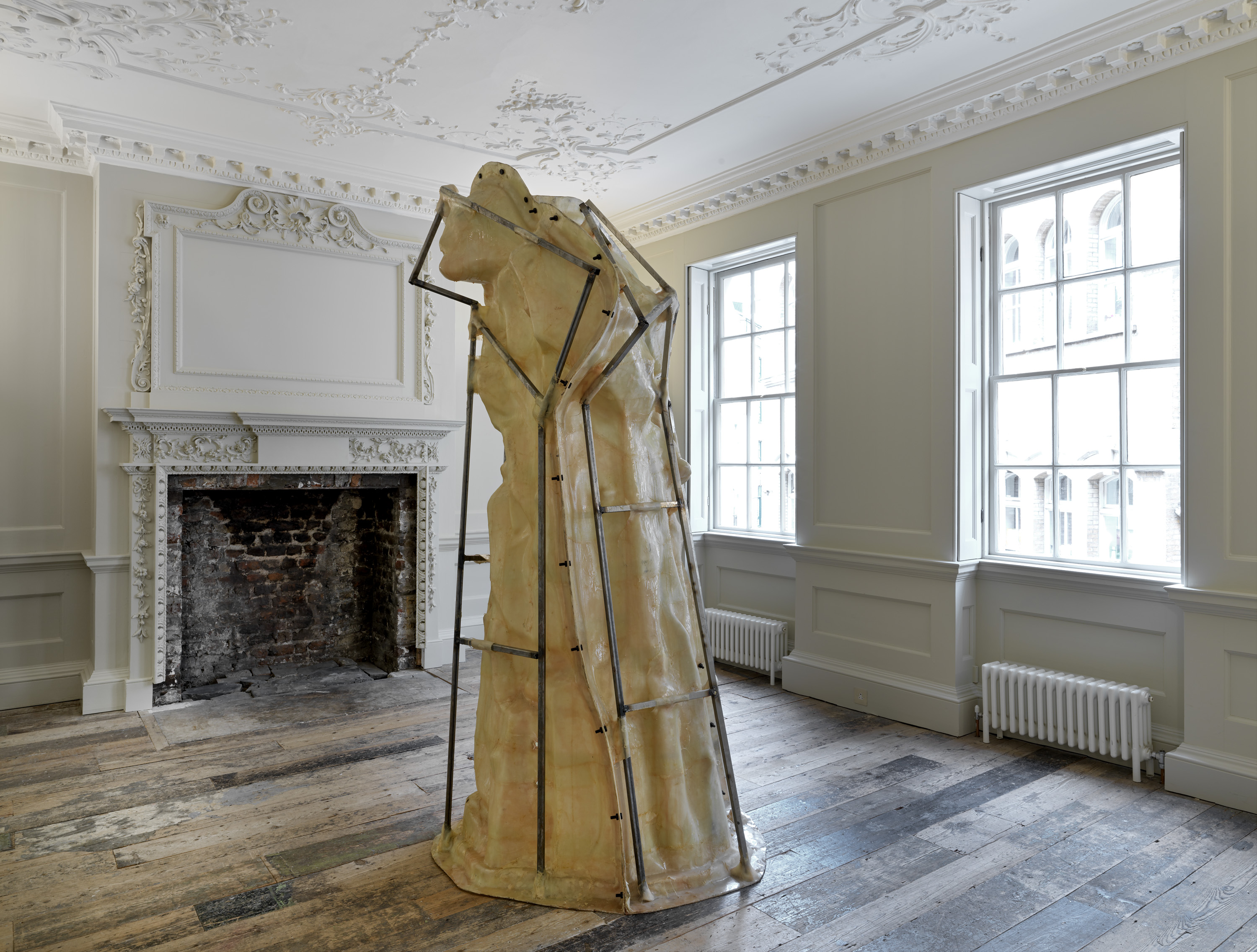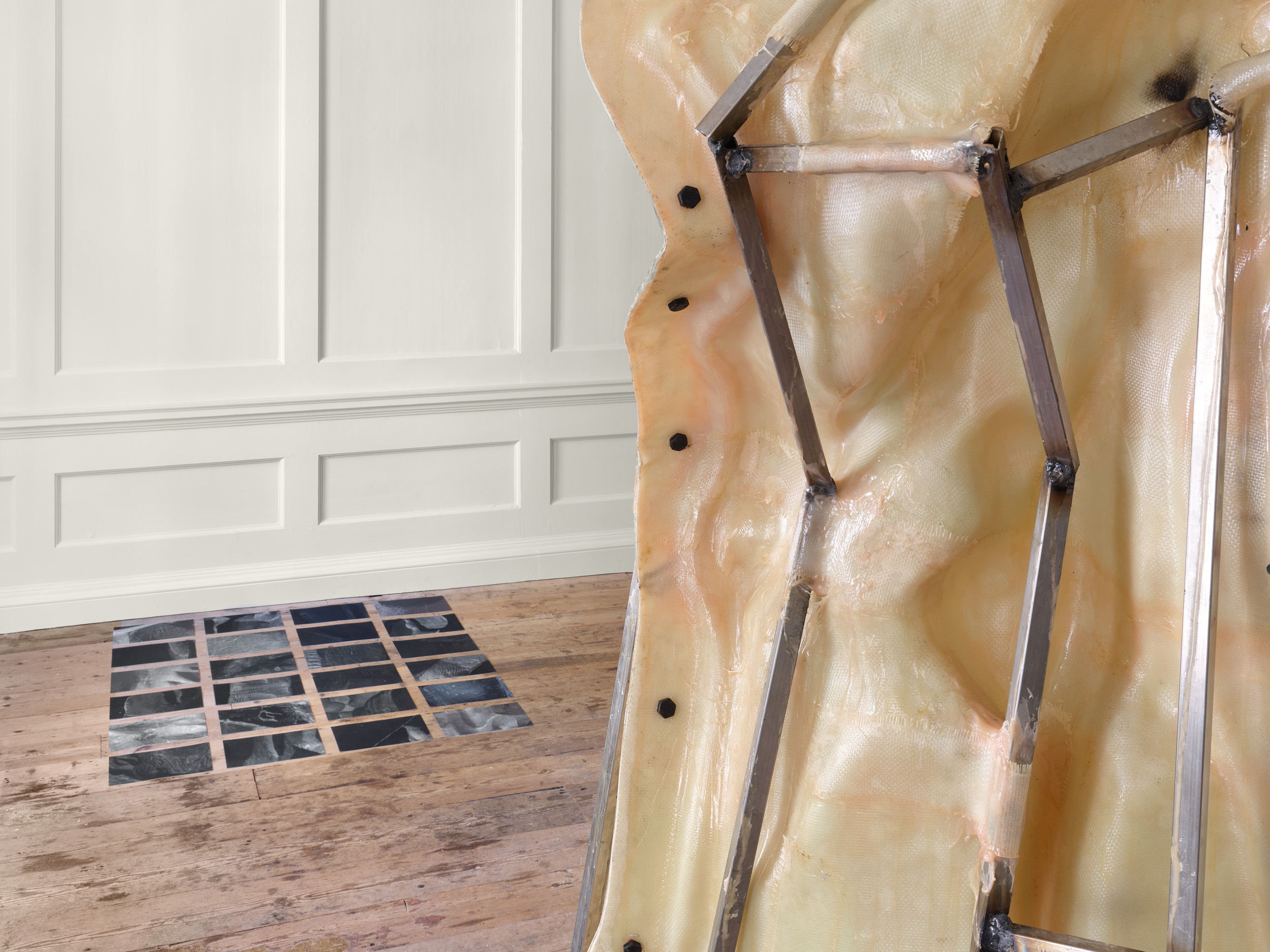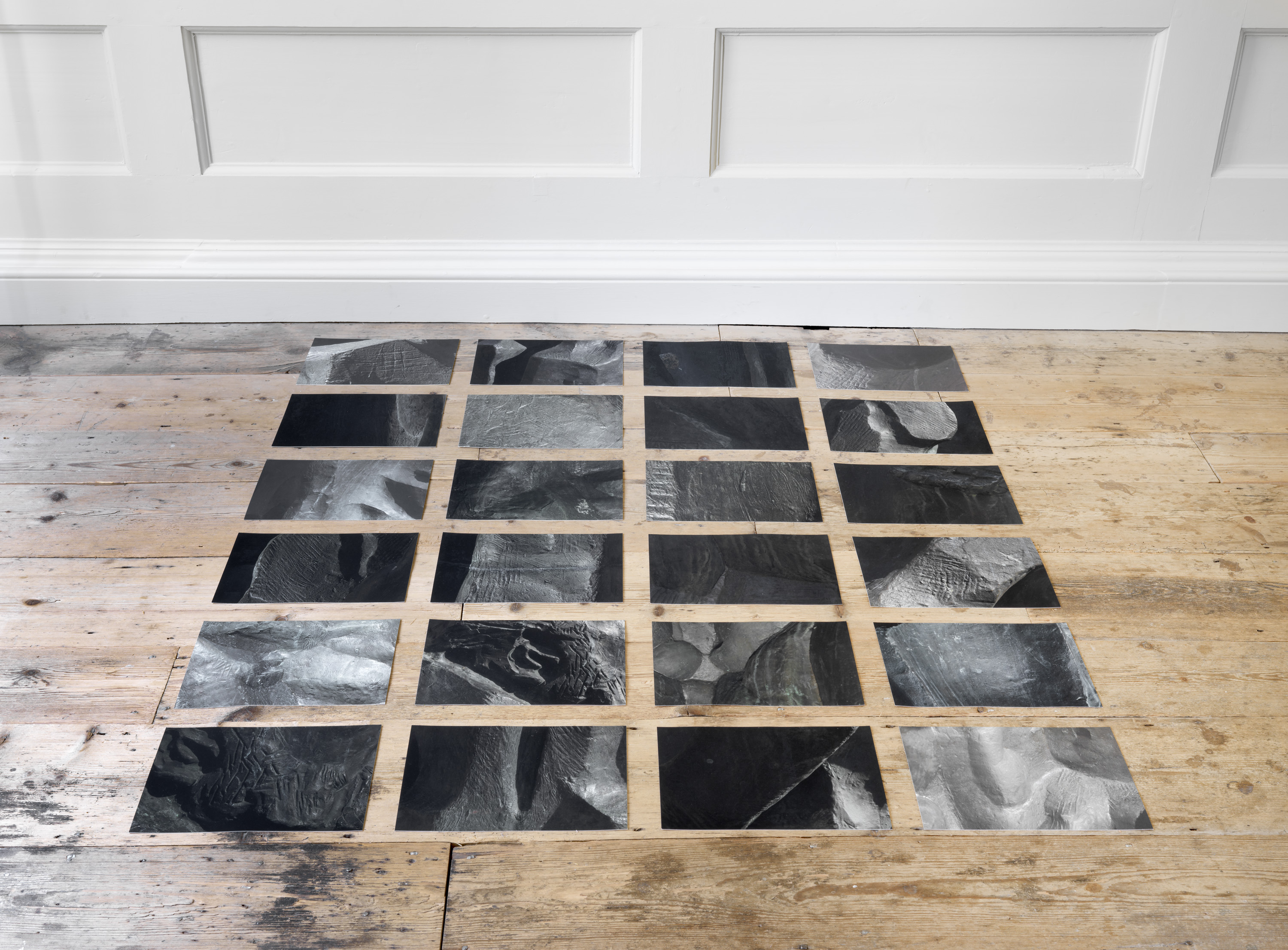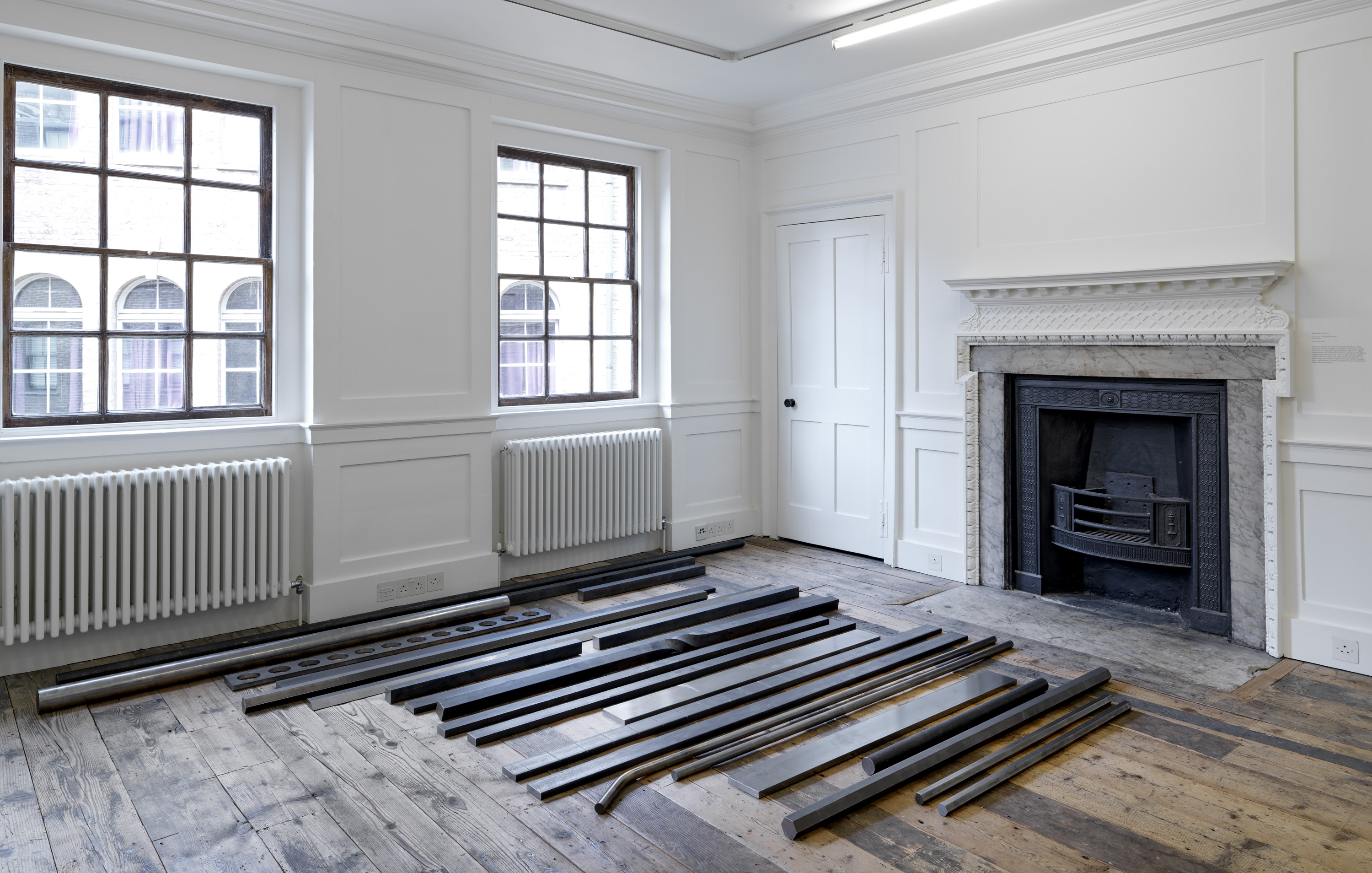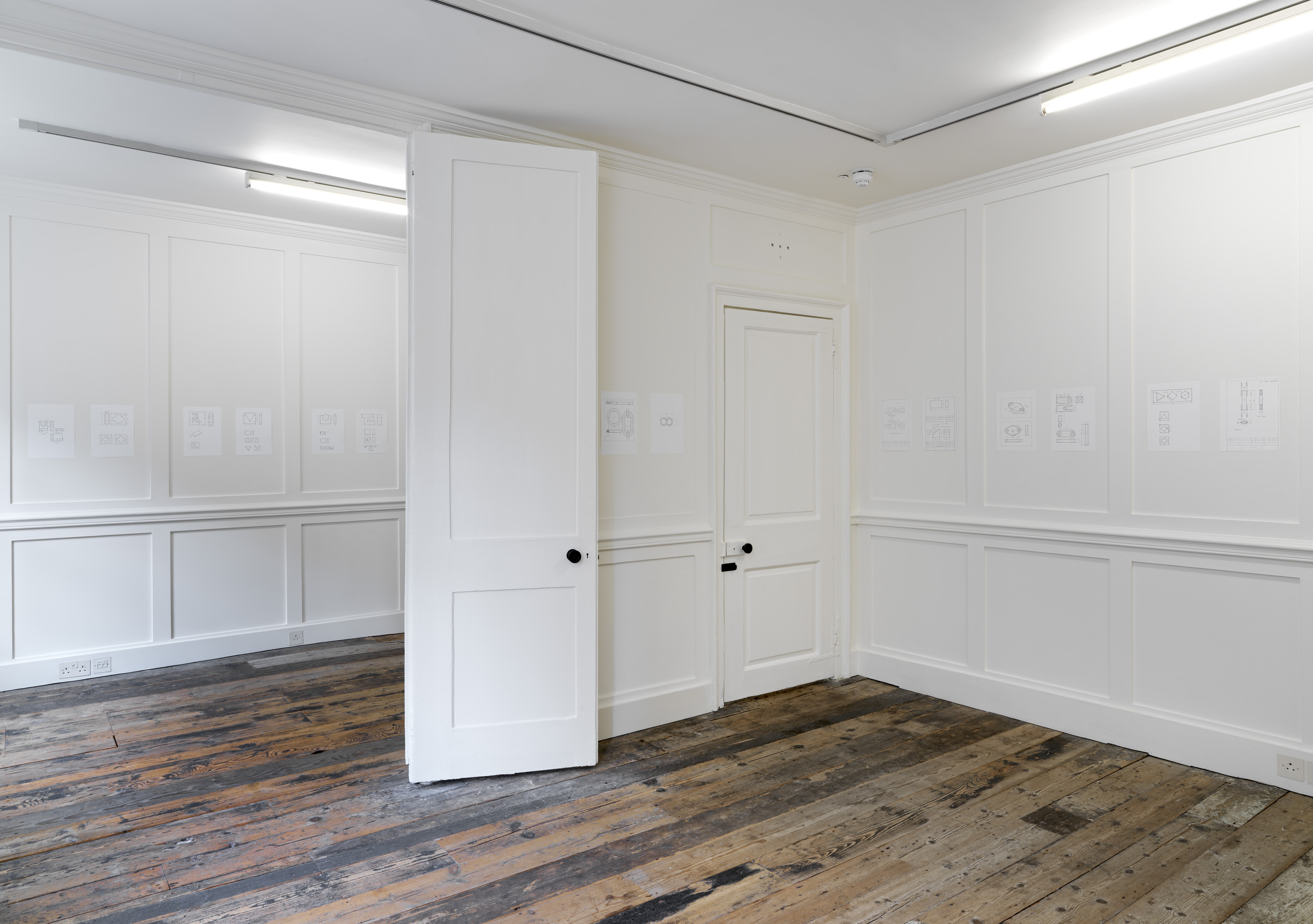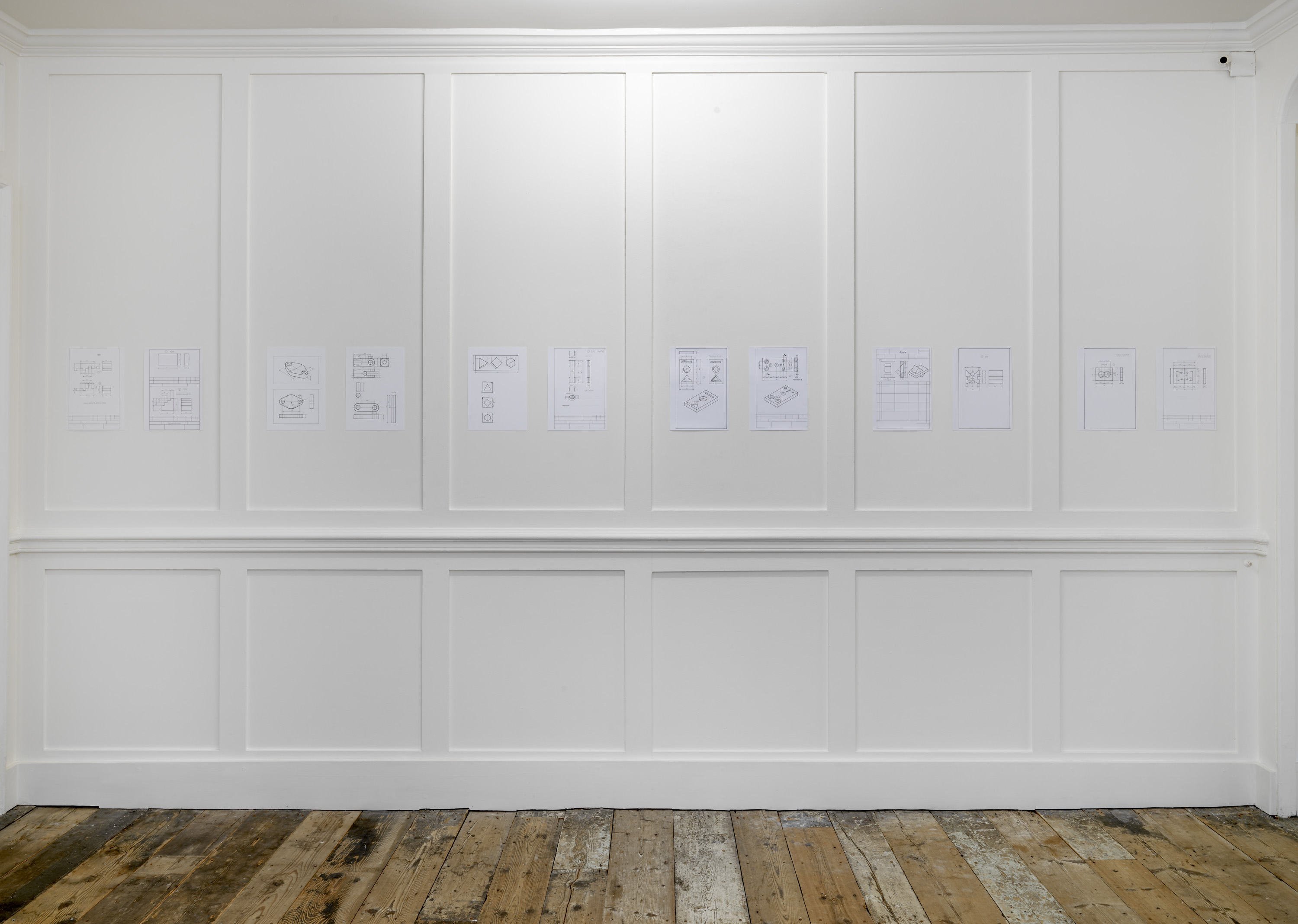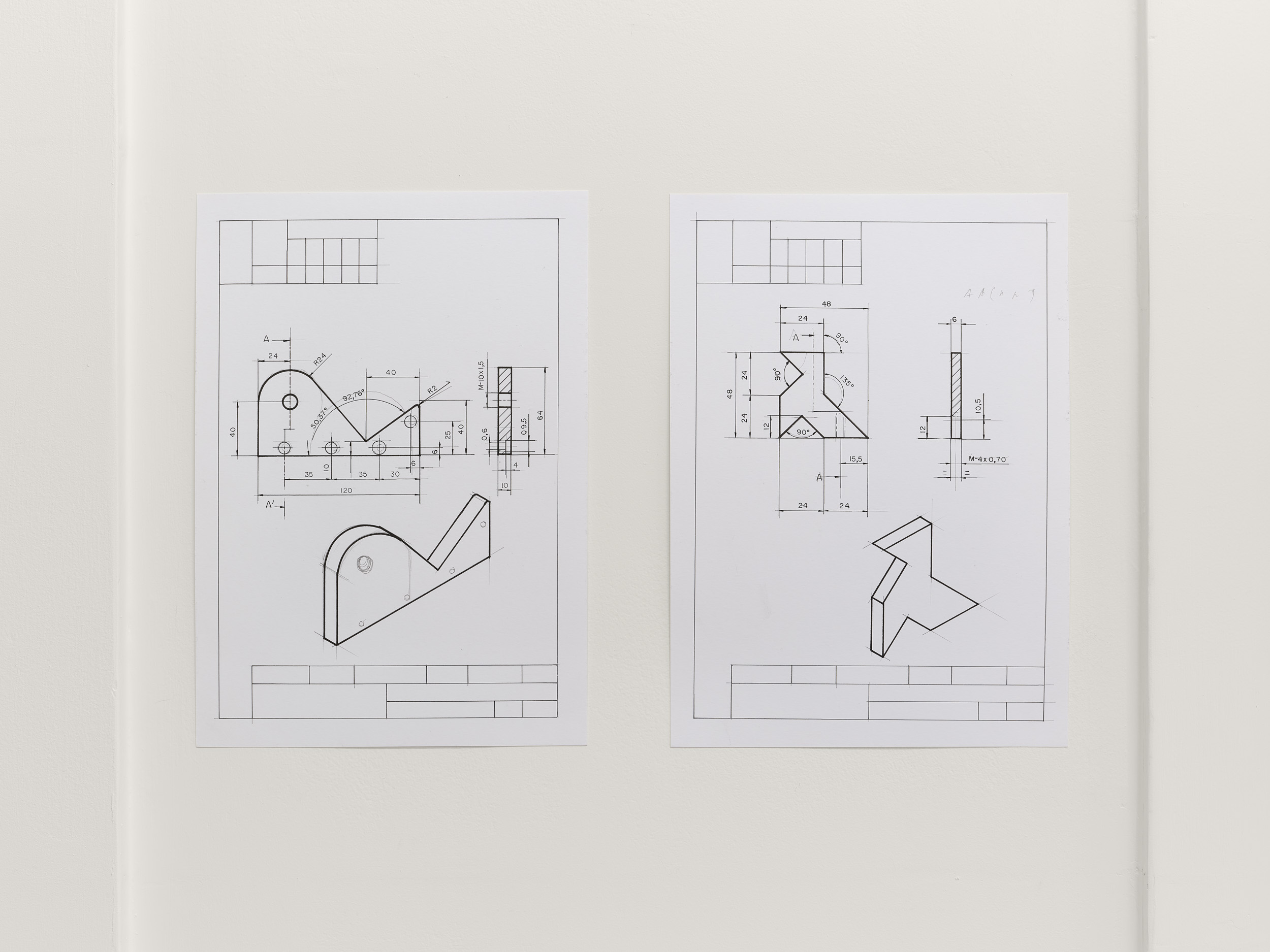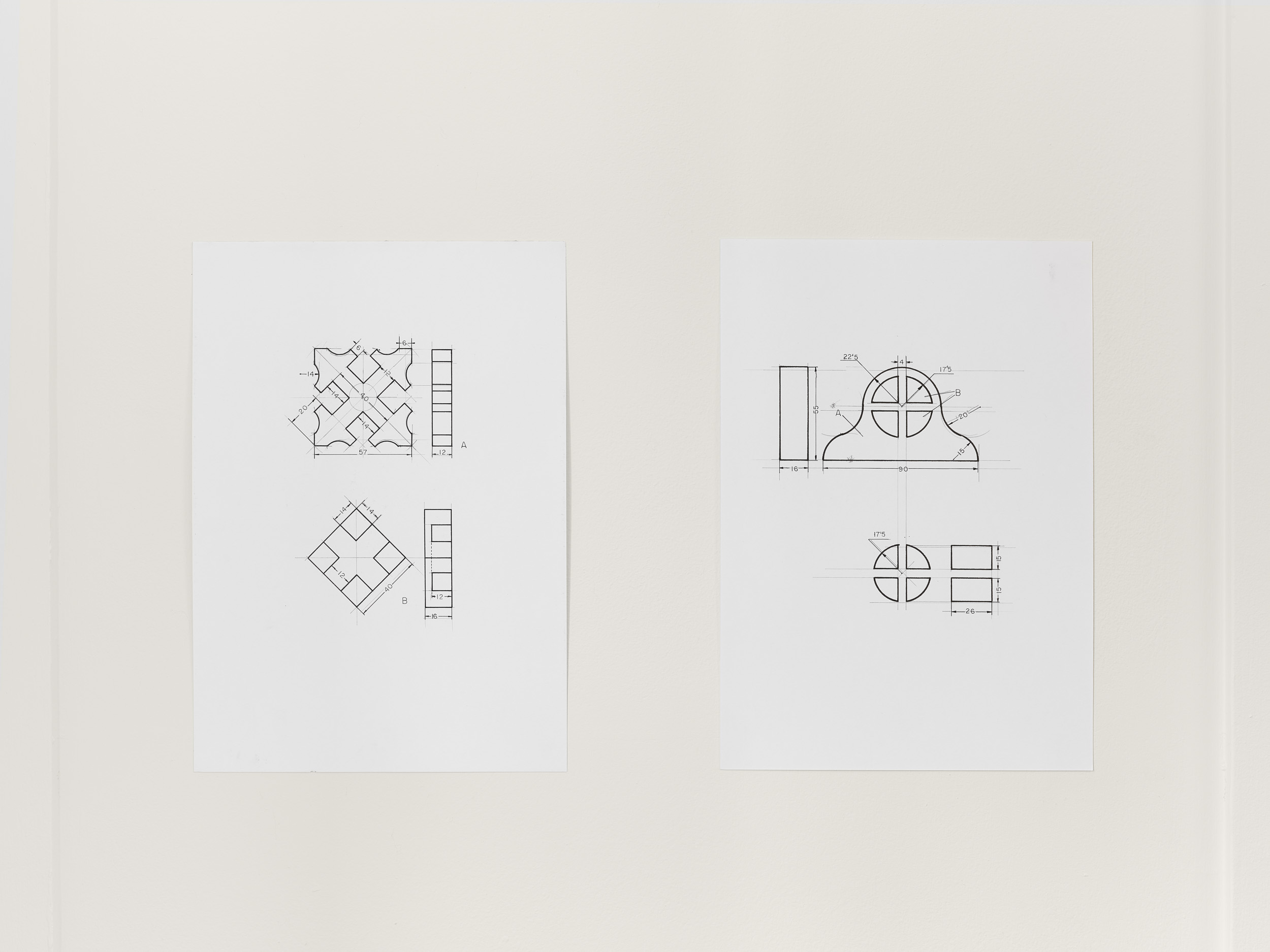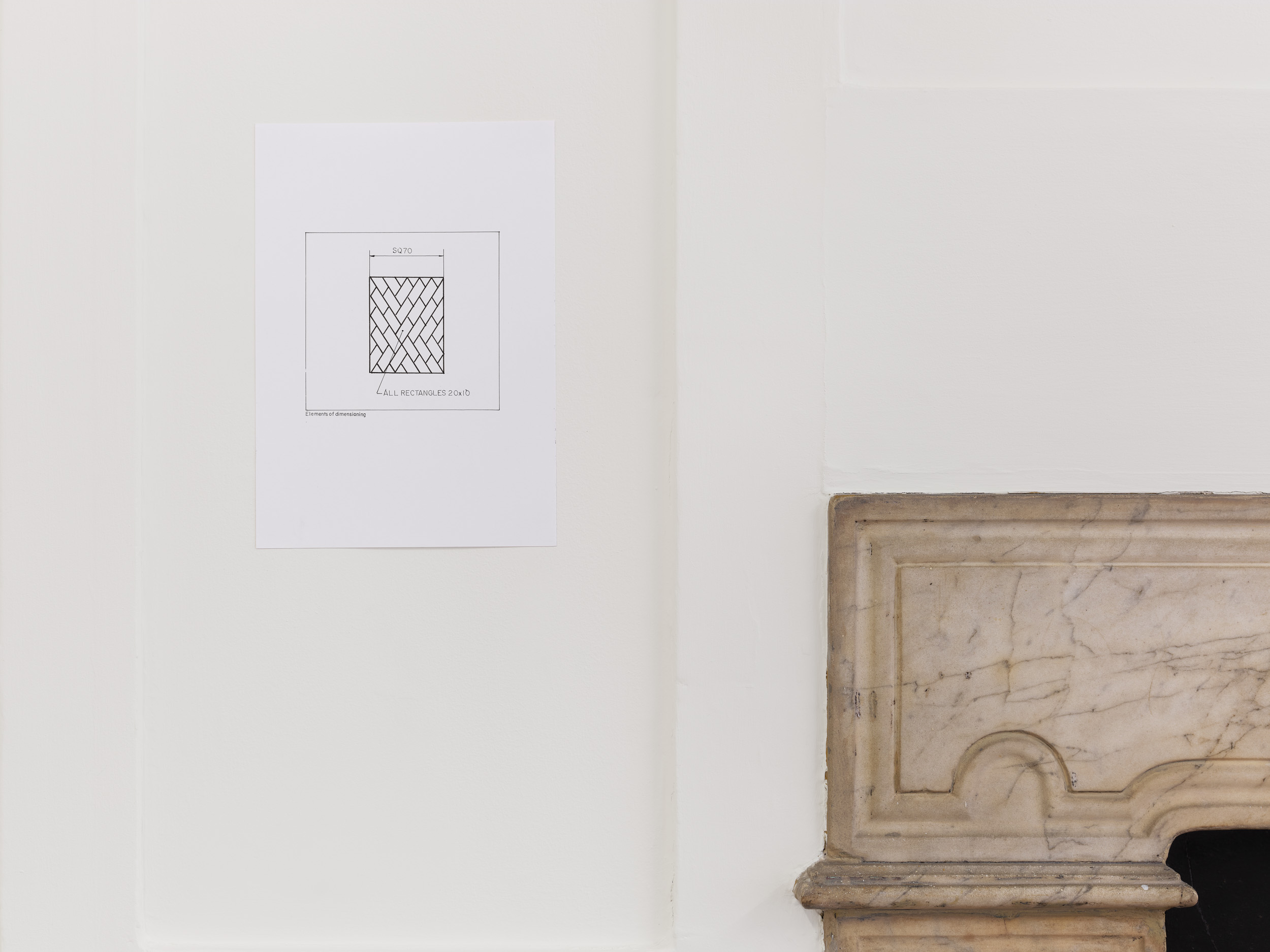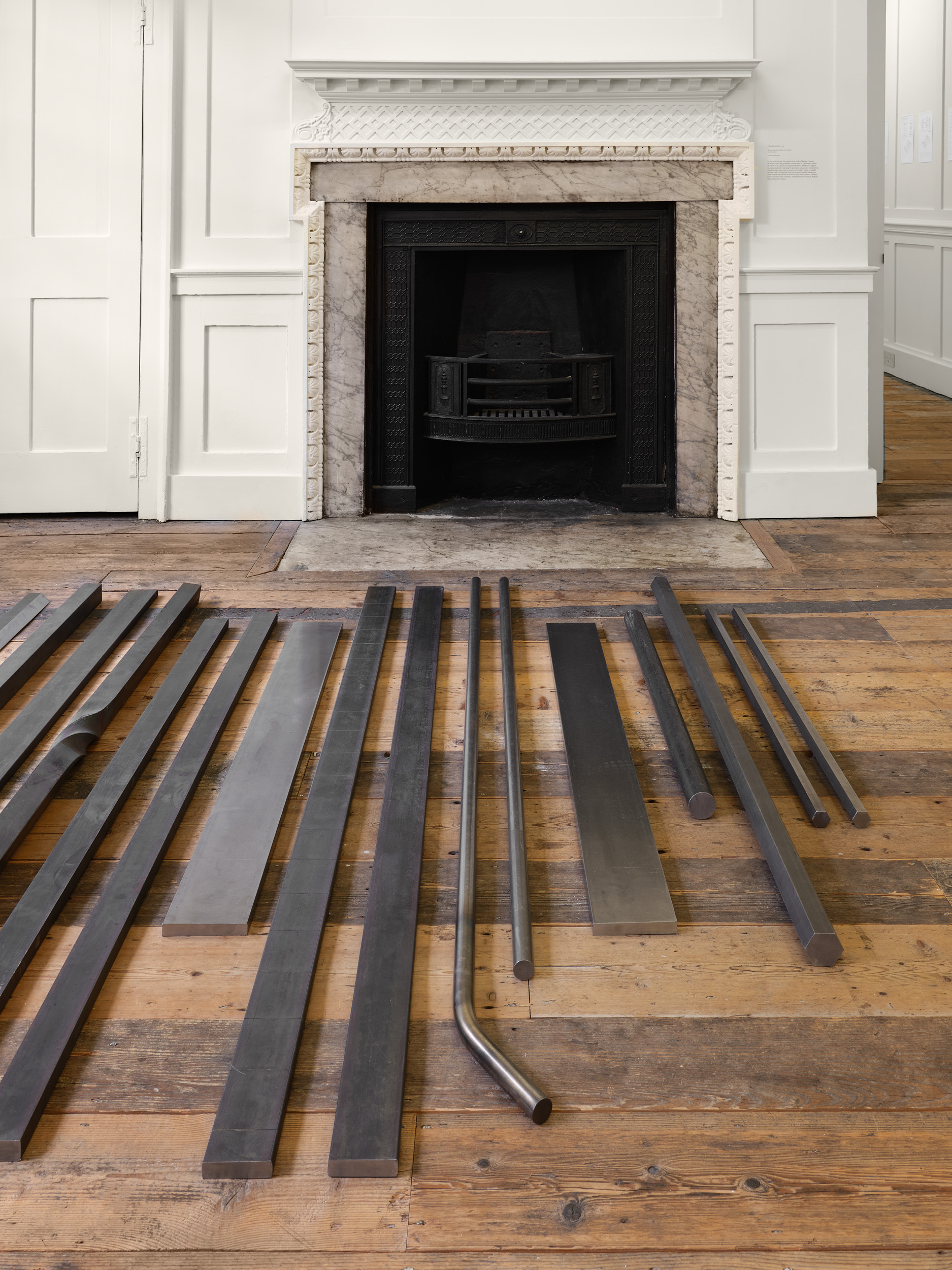This exhibition of the work of Ibon Aranberri (born 1969) shows how cultural, political and personal histories can be processed and configured to generate a provisional contemporary sculpture. The structures on display here, alongside attendant photographs, films and drawings, reflect half-familiar situations and stories which have been disrupted and re-directed. They are the results of separate research projects, or fieldwork, lines of thought becoming non-linear narratives, often developed or unravelled over a number of years.
Although ultimately these forms are indeterminate, open to interpretation by a curious observer, much of Aranberri’s work reflects on modernity’s failure to subordinate or impose order on the natural environment (he grew up in Basque Country during the Franco dictatorship, when its landscape and mountains became emancipatory symbols). Many of the sculptural works in the exhibition imagine transient material culture as subject to geological time, sedimented into archaeological forms.
The installation in gallery 1 appears like a display in a geographical society, recounting the uncertain outcome of a mountaineering expedition. The central gallery has become a landscape of smashed glass, as if returning urban forms of makeshift security and luxury wellness to nature. The origins of the sculptural work in the far gallery lie in Aranberri’s construction twenty years ago of a cave wall and habitat for bats, while the role of the artist in the unpicking of histories is suggested in the stripped-back statues on the first floor. Throughout, Aranberri uses uncaptioned photographs and drawings, as well as steel sections, selected or made for this exhibition as commentaries and footnotes on its itinerary.
On the second floor are drawings of steel parts, once used as exercises to train Spanish apprentices in armaments manufacture, later adapted to teach steel cutting in industry and finally appropriated for minimalist sculpture. The arrangement of Aranberri’s work into modules – forms repeated with differences – reflects a practice developed after minimalism. While there are echoes in his work of the approaches and processes of Robert Smithson as well as Arte Povera from the 1960s and 70s, there is a knowing Romanticism in his view of the subsuming landscape. Aranberri is also mindful of modern Basque sculptor Jorge Oteiza, whose abstract forms partly inspired the void expressed by his cave wall, collapsed much later into sculpture for a gallery.
Contact
T +49—30—26 39 76 20
F +49—30—26 39 76 229
E info(at)bortolozzi.com
Subscribe to our newsletter here →
Schöneberger Ufer 61
10785 Berlin, Germany
Directions
